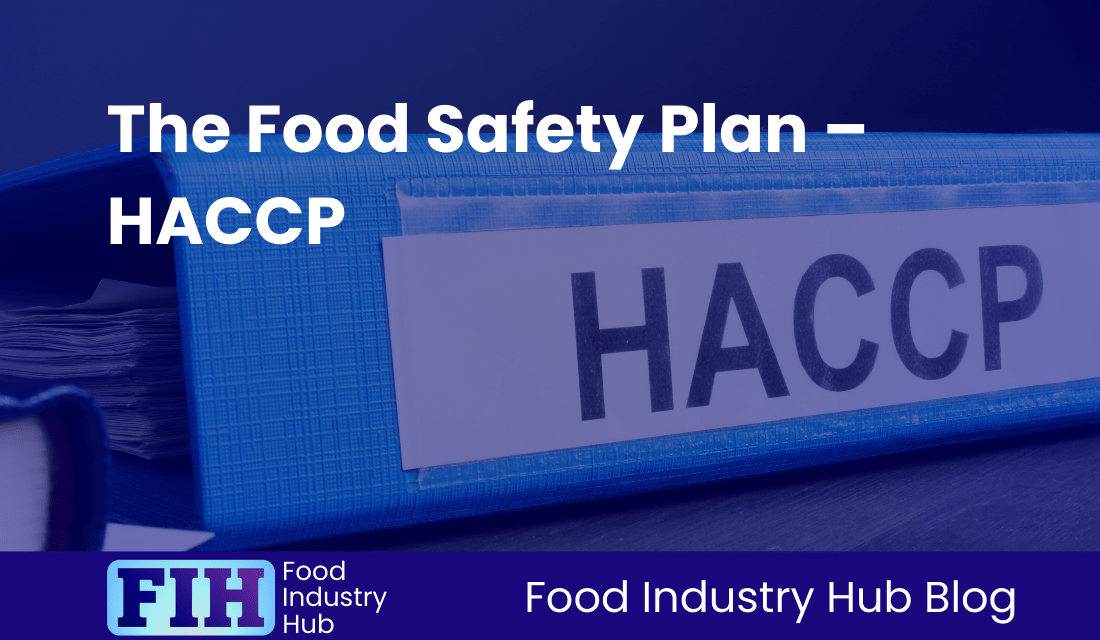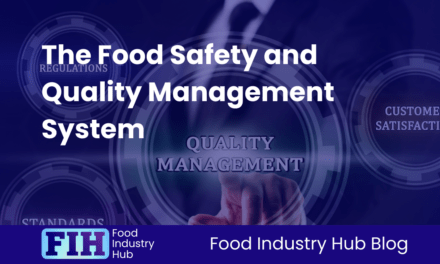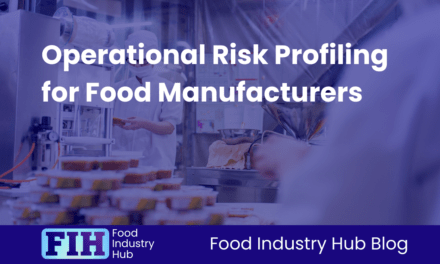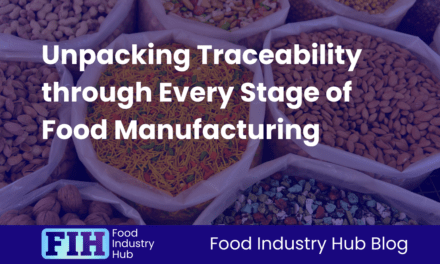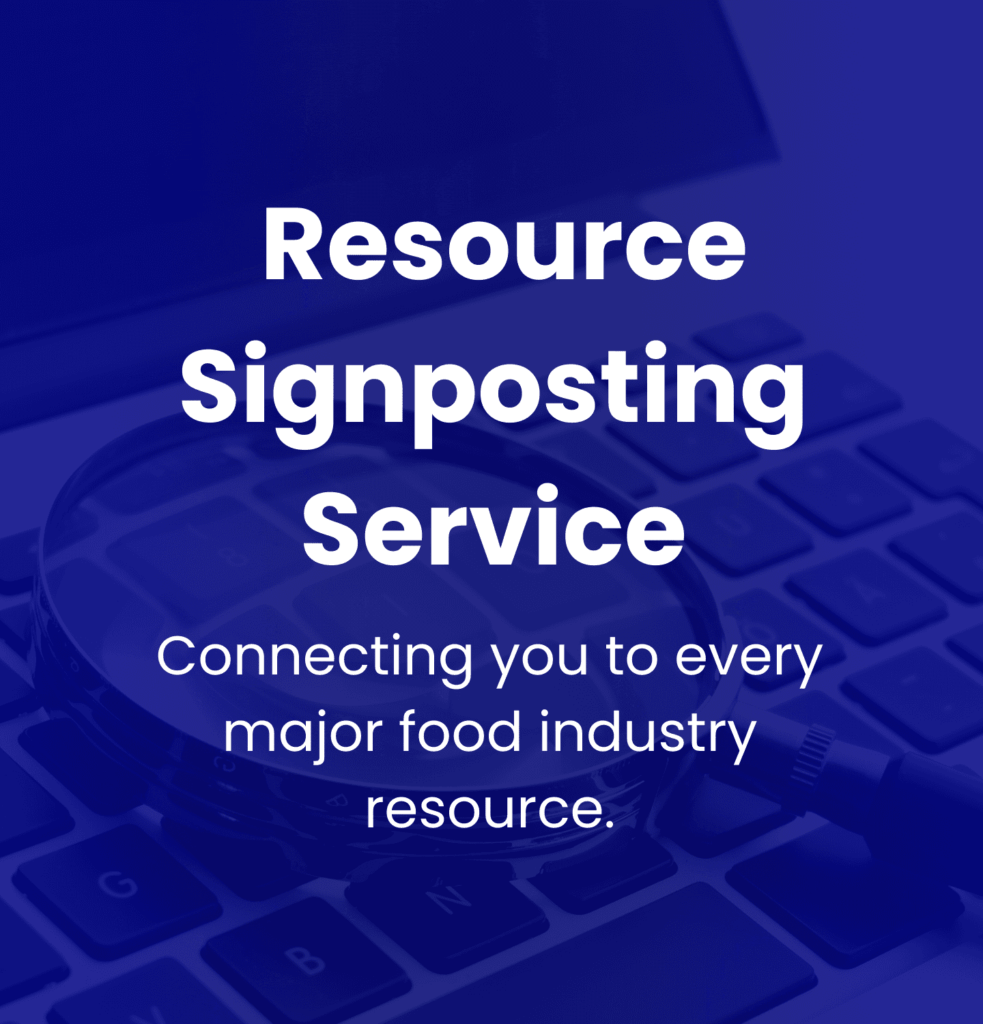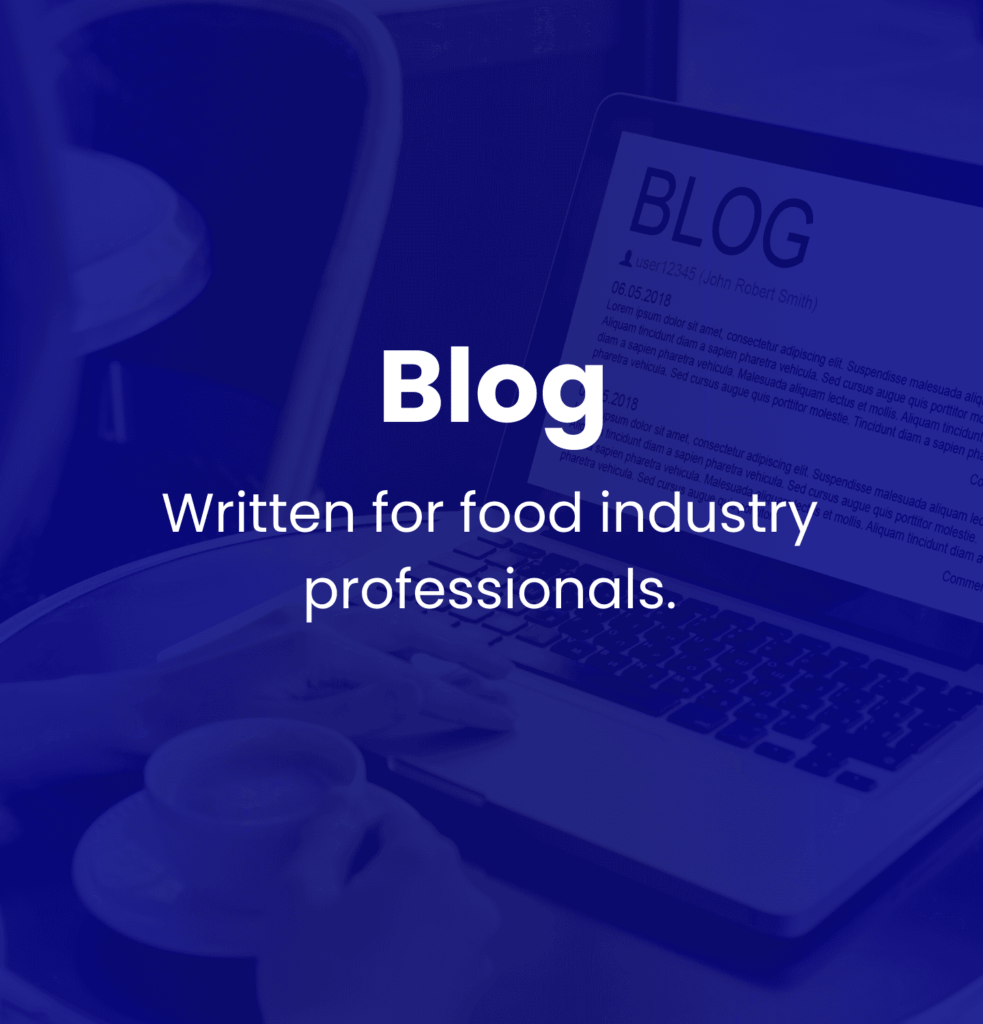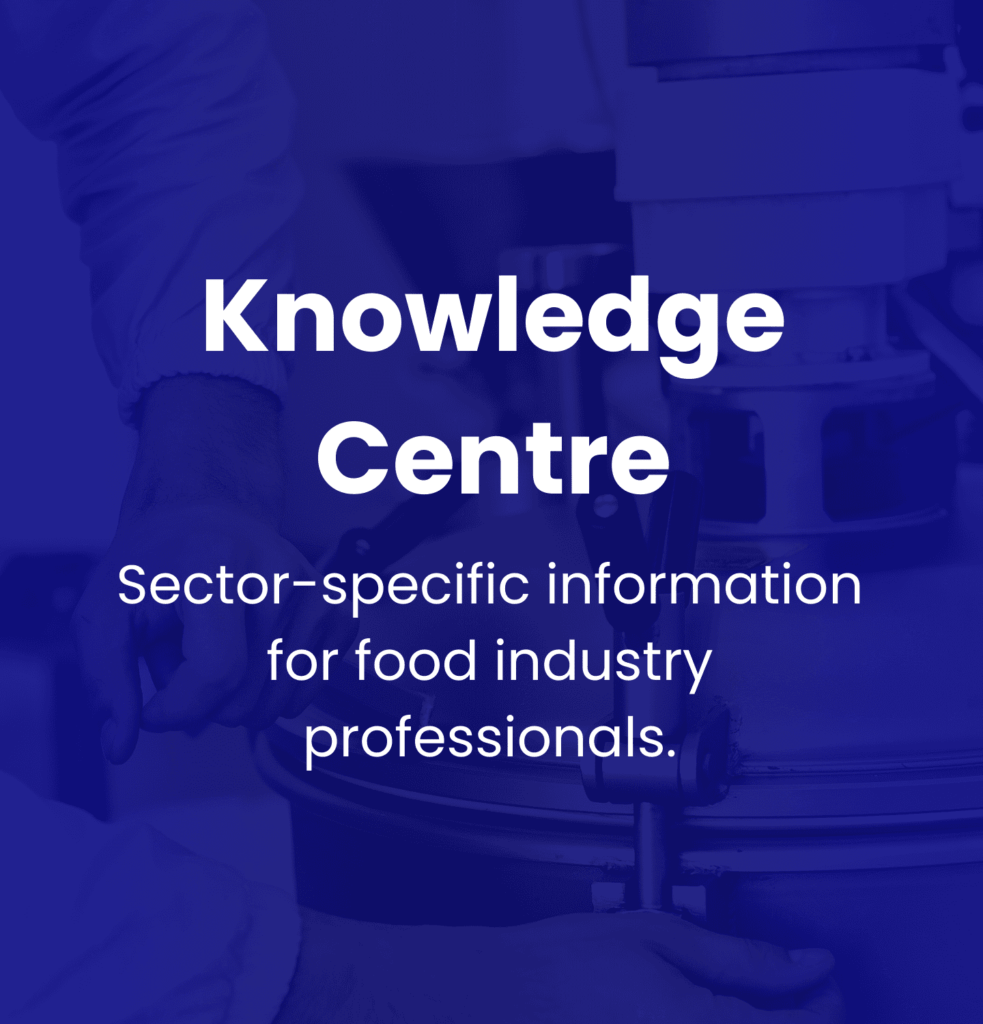Introduction
Have you ever considered how crucial the Food Safety Plan – HACCP is in preventing foodborne illnesses? By implementing a systematic approach that identifies and controls food safety hazards, it’s possible to significantly reduce the risks of biological, chemical, physical, and allergenic contaminants. But how well do you understand the necessary steps? From conducting hazard analyses to defining critical control points, there’s more to the process than you might think. And what about the importance of regular documentation, team training, and supplier assessments? There’s a wealth of knowledge to explore, so why not dive in?
As we dive into the topic, you’ll be interested to know that Food Industry Hub offers integrated management systems for food manufacturers, which you can use to strengthen your assurance processes.
Table of Contents
Key Takeaways
- The Food Safety Plan, based on HACCP principles, identifies and controls food hazards like biological risks, chemical contaminants, foreign bodies, and allergens.
- Critical Control Points (CCPs) are defined to prevent or reduce the identified hazards, with established critical limits.
- A multidisciplinary food safety team is formed to develop, oversee, and implement the HACCP plan.
- Prerequisite programmes like cleaning, pest management, and hygiene practices are established for safe food production.
- The plan includes measures for supplier approval, transportation, allergen management, and cross-contamination prevention.
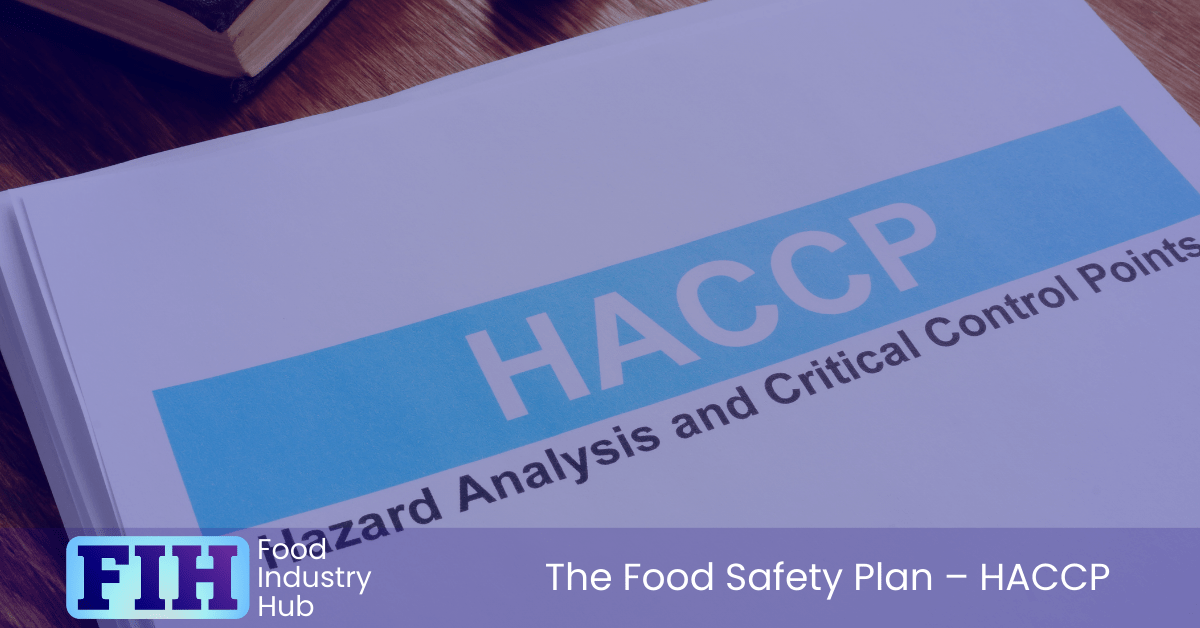
Food Industry Hub Management Systems can significantly boost the effectiveness of your food safety and quality management system, leading to improved confidence and elevated quality assurance throughout your operations.
The Company Must Have a Fully Implemented and Effective Food Safety Plan Incorporating the Codex Alimentarius HACCP Principles
In line with the Codex Alimentarius HACCP principles, your company must have a fully implemented and effective food safety plan.
It’s not just about having a plan in place; it’s about ensuring that it’s operational, practical and adaptable to your business’ unique needs.
You start by conducting a hazard analysis. Identify potential hazards that could occur in your production process. This could include biological, chemical, physical, or allergenic hazards.
Then, define critical control points (CCPs) in your process where these hazards can be prevented, eliminated, or reduced to acceptable levels.
Next, establish critical limits for each CCP. These are the maximum or minimum values to which a hazard must be controlled to prevent, eliminate or reduce it.
Then, you’ll need monitoring procedures to track these critical limits and ensure they’re consistently met.
If a critical limit isn’t met, corrective actions should be taken immediately. This might involve discarding the product, reprocessing it, or stopping production.
Lastly, your food safety plan should include verification and record-keeping procedures.
It’s essential to verify that your plan is working effectively and maintain records as proof.
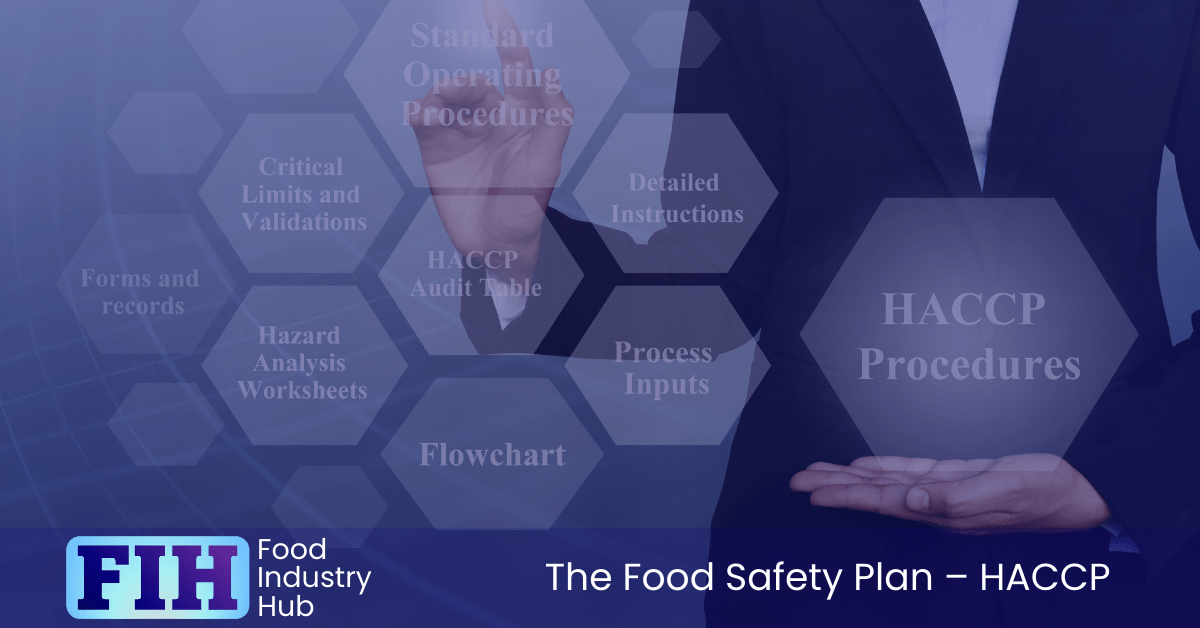
The HACCP Food Safety Team
As you build your HACCP plan, you’ll need a dedicated food safety team.
This isn’t a one-person job; it involves a multidisciplinary team, covering quality assurance, technical management, production, and other relevant areas like engineering and hygiene.
It’s crucial that your team isn’t only knowledgeable but competent as well.
The HACCP Or Food Safety Plan Must Be Developed and Managed by A Multi-Disciplinary Food Safety Team That Includes Those Responsible for Quality Assurance, Technical Management, Production Operations and Other Relevant Functions (E.G. Engineering, Hygiene)
Developing and managing an effective HACCP or food safety plan isn’t a one-man job. It’s a collaborative effort that requires the expertise of a diverse food safety team. You need people who handle quality assurance, technical management, production operations and more. These roles are essential to ensure that every aspect of food safety is covered.
Quality assurance personnel ensure that the standards set out in your plan are adhered to. They’re the gatekeepers of your food’s quality, making sure that every batch meets your high standards.
Technical management’s role is to oversee the plan’s development and execution, ensuring that all the technical aspects are correctly handled. They’re your go-to team when it comes to the nitty-gritty of the HACCP plan.
Those involved in production operations ensure that the plan is properly implemented on the production floor. They’re the ones who bring the plan to life, making sure that the everyday operations follow the safety measures outlined in your HACCP plan.
Other roles, like engineering and hygiene, also play key parts. Whether it’s maintaining the equipment or ensuring cleanliness, every member of your food safety team has an important role in the HACCP plan.
The HACCP Team Must Be Knowledgeable and Competent
You must understand the importance of having a knowledgeable and competent HACCP food safety team.
The team leader should possess comprehensive knowledge of Codex HACCP principles and demonstrate competence through experience and training.
If there are any legal requirements for specific training, ensure they’re in place for all team members.
The Team Leader Must Have an In-Depth Knowledge of Codex HACCP Principles (Or Equivalent) And Be Able to Demonstrate Competence, Experience and Training
Undoubtedly, the role of a team leader in maintaining food safety, particularly in the context of applying the Codex HACCP principles, is paramount.
As the team leader, you’re expected to have extensive knowledge of these principles. You’ll need to demonstrate not only competence but also experience and training.
This ensures the highest standards of food safety are maintained.
Where There Is a Legal Requirement for Specific Training, This Must Be in Place for Members of The HACCP Team
Legal obligations demand specific training for all members of the HACCP team.
You’re required to ensure this is in place. It’s not just about ticking a box, but making sure your team’s competent.
Their knowledge is crucial to the success of your food safety plan.
Don’t compromise on this; it’s a legal requirement that serves a bigger purpose – safe, quality food production.

Prerequisite Programmes
Now, let’s move on to prerequisite programmes.
You need to establish and maintain certain environmental and operational programmes to ensure a suitable environment for producing safe and legal food products.
These programmes, which must be clearly documented and reviewed within your HACCP or food safety plan, should also consider the production risk zoning of your site.
The Site Must Establish and Maintain Environmental and Operational Programmes Necessary to Create an Environment Suitable to Produce Safe and Legal Food Products Prerequisite Programmes)
You need to establish and maintain environmental and operational programmes to produce safe and legal food products.
This includes putting in place cleaning and disinfection procedures, pest management strategies, and maintenance programmes for equipment and buildings.
Don’t forget the importance of personal hygiene requirements and staff training, as these are crucial aspects of any effective food safety plan.
Cleaning and Disinfection
Ensuring a consistently clean and disinfected environment is a crucial part of any effective food safety plan.
You’ve got to establish stringent cleaning processes and disinfection procedures.
It’s not just about cleanliness – it’s about killing off bacteria and other harmful elements that could jeopardise food safety.
Pest Management
Effective pest management is a fundamental aspect of creating an environment that consistently produces safe and legal food products.
You must establish a robust system to prevent, control, and eliminate pests. This includes regular inspections, use of approved pest control methods, and proper waste management.
Don’t overlook this critical step; it’s key to ensuring food safety and compliance with regulations.
Maintenance Programmes for Equipment and Buildings
Having a solid pest management strategy in place sets the stage for the next step in ensuring food safety: the maintenance programmes for equipment and buildings.
You’ve got to regularly inspect, clean, and repair your facilities and equipment. It’s not just for longevity, but to prevent any food contamination.
Personal Hygiene Requirements
Your team’s adherence to personal hygiene requirements is a pivotal factor in ensuring the safety and legality of your food products.
It’s vital that everyone maintains high standards of cleanliness. This includes regular handwashing, proper use of protective clothing, and avoiding work when ill.
Such measures minimise the risk of food contamination, safeguarding your product’s integrity and your company’s reputation.
Staff Training
Beyond maintaining individual hygiene, it’s equally important to invest in comprehensive staff training.
This ensures your team understands and implements food safety practices consistently. Training isn’t a one-time event, it’s an ongoing process.
Regular updates and refreshers help maintain high standards, prevent safety lapses, and keep your food production environment optimal.
Supplier Approval and Purchasing
Supplier approval and purchasing play a pivotal role for food safety.
This ensures the food you produce is safe and legal. Remember, your products are only as good as the ingredients you use.
Transportation Arrangements
Ensuring safe and legal food products requires a focus on transportation arrangements.
You must consider factors like temperature control, vehicle cleanliness, and proper traceability.
Failure to manage these aspects can risk product safety.
Therefore, establishing and maintaining effective transport systems is essential.
Processes To Prevent Cross-Contamination
Every food production site must meticulously establish and maintain processes to prevent cross-contamination.
You should implement stringent cleaning regimes and separate handling of raw and ready-to-eat foods.
It’s essential to routinely monitor these processes to ensure they’re effective.
Don’t forget, a single lapse can result in widespread contamination, endangering public health and your business’ reputation.
Allergen Management
Creating a safe food production environment requires careful allergen management.
You must identify potential allergens in your ingredients and control their presence throughout production. This includes segregating allergenic ingredients, thorough cleaning procedures, and robust labelling practices.
The Prerequisite Programmes for The Particular Areas of The Site Must Take into Account the Production Risk Zoning
The prerequisite programmes are the backbone of your HACCP plan, providing a solid foundation for food safety. They’re not a one-size-fits-all solution, though.
When designing the prerequisite programmes, consideration must be given to the risk profile of each production area. Specifically, this could mean taking into account Things like whether open product is handled, or if hygiene interventions such as positive air pressure are in effect.
In other words, it is not sufficient to merely implement prerequisite programmes throughout a manufacturing facility – the implementation of prerequisite programmes needs to be appropriate to the risk profile for each zone.
The Control Measures and Monitoring Procedures for The Prerequisite Programmes Must Be Clearly Documented and Must Be Included Within the Development and Reviews of The HACCP Or Food Safety Plan
You must clearly document control measures and monitoring procedures for the prerequisite programmes. They’re not merely additional paperwork, but vital tools in ensuring food safety.
Your control measures should be comprehensive and specific, addressing all potential hazards identified in your prerequisite programmes. They’re your first line of defence against risks, and you need to be sure they’re robust.
Monitoring procedures are equally important. You can’t just set your control measures and forget them. Regularly check that they’re being implemented correctly and that they’re actually working. Are they effectively minimising or eliminating the identified hazards? If not, it’s time to revise your measures.
Remember, these aren’t static documents. They should be included within the development and reviews of your HACCP or food safety plan. Regular review ensures they remain relevant and effective, adapting as your operations and any potential hazards change.
Clear documentation and regular review of your control measures and monitoring procedures are key in maintaining a successful HACCP or food safety plan.
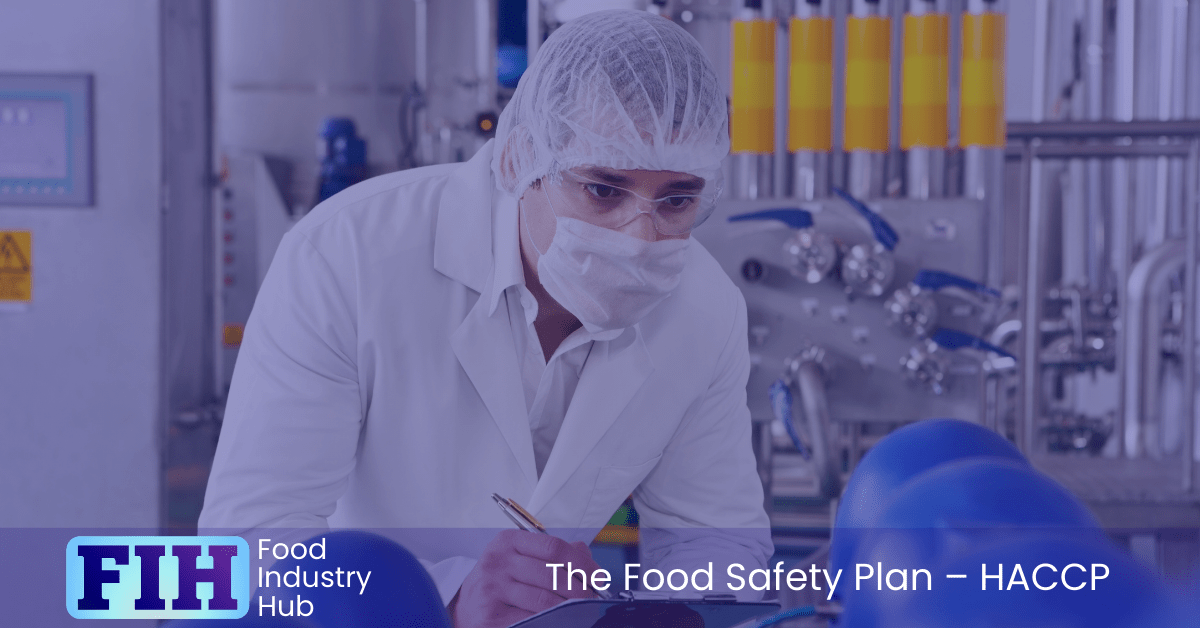
Sign-up for the Food Industry Hub Mail Service
We regularly produce new content for food industry professionals, and the Food Industry Hub Mail Service is the best way to stay up to date with the latest additions.
Signup today to be added to the Food Industry Hub mailing list.
Description of the Product
When describing your product in the HACCP plan, you’ll need to include all relevant food safety parameters.
It’s crucial that you gather, maintain, and update all necessary information for conducting the hazard analysis.
Describing the Product
First and foremost, let’s delve into the specifics of your product. What’s it? You have to define it accurately and concisely. Your product’s name, type, and the category it falls into are factors that need to be noted down and fed into the risk assessment.
Next, it’s helpful to outline its intended use. Who are your consumers? Are there specific dietary groups your product caters to, like immunocompromised individuals or allergy sufferers?
What’s the shelf life of your product, and how should it be stored?
The ingredients used in your product also need to be described. This includes everything from the main elements to the smallest additives.
It’s equally important to detail your product’s method of production. Are there any particular processing steps that your product undergoes? Do these processes affect the final product risk profile in any way?
All Relevant Food Safety Parameters Must Be Included in The Product Descriptions
When you’re documenting product descriptions for food items, it’s crucial to include all the food safety parameters.
This isn’t just about listing ingredients and allergens, but also about specifying the origin of those ingredients, their physical or chemical properties like pH and water activity, and any treatments they’ve undergone, such as cooking or cooling.
Don’t forget to detail the packaging system as well, whether it’s a modified atmosphere or vacuum.
Composition (E.G. Raw Materials, Ingredients, Allergens, Recipe)
Understanding the composition of your product is a fundamental to establishing risk.
You’ll need to identify all raw materials, ingredients, and potential allergens.
Origin of Ingredients
The origin of ingredients can have a substantial impact on the risk profile of your products.
For ‘origin’, You can consider how the geographical origin of raw materials might impact food safety risks. For example, raw materials sourced from certain countries may have a reputation for increased risks associated with authenticity.
Alternatively, there may be radiation or contamination risks associated with particular geographical regions.
Physical Or Chemical Properties That Impact Food Safety (E.G. pH, Water Activity)
Next, let’s delve into the physical or chemical properties that impact food safety, such as pH and water activity.
You need to monitor pH levels, as they can affect bacterial growth. Higher acidity typically hinders bacterial proliferation.
Water activity too plays an important role. Lower water activity can prevent bacterial growth, keeping food safe for consumption.
Any attributes that could impact product stability should be captured as part of the assessment.
Treatment And Processing (E.G. Cooking, Cooling)
How do you ensure food safety during treatment and processing stages such as cooking and cooling?
You’ve to strictly monitor and control temperatures. Cooking should reduce harmful bacteria to safe levels, while cooling should be quick to prevent bacterial growth.
Some temperature-controlled processing steps, for example pasteurisation, are carried out specifically for the purpose of food safety risk mitigation. Clearly, these processing steps Are critical to food safety risk profiling.
Packaging System (E.G. Modified Atmosphere, Vacuum)
Depending on the product’s stability characteristics, intended shelf life, and distribution conditions, you may need to consider modified atmosphere or vacuum packaging systems. These help retain freshness, extend shelf-life and ensure food safety.
Don’t forget, any applicable food safety parameters must be accurately included in your product descriptions.
It’s all about ensuring your product’s integrity from production to consumption.
Storage And Distribution Conditions (E.G. Chilled, Ambient)
Your storage and distribution process is as crucial to food safety as any cooking or packaging method.
It’s vital to maintain the right conditions, whether chilled or ambient, throughout your supply chain. This ensures product integrity, inhibits microbial growth, and keeps your food safe for consumption.
Always remember, a break in your cold chain can lead to spoilage and/or foodborne illnesses.
You’ll want to monitor temperature, humidity, and light levels carefully.
Incorrect storage can degrade quality, alter taste, and even pose health risks.
All Relevant Information Needed to Conduct the Hazard Analysis Must Be Collected, Maintained, Documented and Updated
To ensure the safety of the food products, it’s crucial that you collect, maintain, document, and regularly update all relevant information needed to conduct the hazard analysis.
Your first step should be to thoroughly describe the product. This includes detailing its ingredients, the processing methods, packaging, storage conditions, and distribution methods.
Next, you must identify the potential hazards associated with each step of the product’s lifecycle. This means you’ll need to understand the biological, chemical, and physical risks that could occur at each stage, from raw materials to finished product.
You’ll also want to consider how the product is used or consumed, as this could expose additional hazards.
Once you’ve collected this data, it’s your job to maintain it. This means regularly reviewing and updating your information to reflect any changes in the product or its processes.
Thoroughly documenting hazard analysis information forms the basis for future reviews and serves as evidence of diligence for future reference.
The Company Must Ensure That the HACCP Or Food Safety Plan Is Based on Comprehensive Information Sources
The Latest Scientific Literature
Staying updated with the latest scientific literature is crucial in creating a robust HACCP or food safety plan.
You’ve got to keep a finger on the pulse of new findings, technologies, and protocols. This knowledge empowers you to anticipate potential hazards, and implement effective, cutting-edge preventative measures.
Historical And Known Hazards Associated with Specific Food Products
Understanding the historical and known hazards associated with specific food products is a critical aspect of your food safety plan.
You must research past incidents, identifying common factors in contamination or spoilage. This isn’t just about avoiding repeats; it’s proactive prevention.
Relevant Codes of Practice
Almost every food product has applicable codes of practice that you must comply with to ensure the safety of your consumers.
These codes can vary, but they’re all designed to protect public health. You’re expected to know and follow them.
They’ll guide your HACCP plan, ensuring it’s comprehensive and effective.
Recognised Guidelines
To create an effective HACCP or food safety plan, you must base it on comprehensive information sources.
You’ll need to follow recognised guidelines such as those provided by the Codex Alimentarius and European Commission.
These guidelines are internationally accepted, ensuring your plan meets global standards.
Food Safety Legislation Relevant for The Production and Sale of Products
You’ve got to know the legal requirements for your product’s production and sale. It’s not just about following HACCP guidelines, but also ensuring compliance with national and international laws.
Don’t overlook this; it’s vital for your product’s market legality and your company’s reputation.
Customer Requirements
While understanding and adhering to the appropriate food safety legislation is a key aspect of your business, it’s equally important to focus on your customers’ requirements.
You’ve got to ensure your HACCP plan reflects these needs so that you can ensure compatibility with customer codes of practice.
This way, you’re not just meeting legal standards, you’re also satisfying your customers, which is crucial for your business’s success.
A Copy of Any Existing Site HACCP Plans (E.G. For Products Already in Production at The Site)
Keeping an updated copy of your current site’s HACCP plans is absolutely vital, especially for products that are already in production.
It allows you to keep track, assess, and manage food safety risks effectively. These plans must be detailed and based on comprehensive information sources.
Having an existing HACCP plan to hand enables you to build on the risk assessment and institutional knowledge already accumulated. This helps to avoid omissions and can guide the identification of hazards based on risks already highlighted.
A Map of The Premises and Equipment Layout
Your food safety plan isn’t complete without a detailed map of your premises and an accurate layout of your equipment.
This map assists in identifying potential hazard areas. It’s crucial to know where everything is, from food storage to prep areas, to ensure proper food safety.
The map should also identify different risk zones, which are mandatory considerations for prerequisite programmes and hazard analysis in general.
A Water Distribution Diagram for The Site
To ensure food safety, you have to include a water distribution diagram in your HACCP plan.
This diagram should clearly depict the flow of water through your site, highlighting points where it interacts with food production.
It’s not only a means of identifying potential hazards, but also, it provides a visual guide to improve your water management strategies.
Remember, the directional flow of water from the site’s inlet through to points of use can be used to predict the flow of potentially contaminated water and thus risk across site. Identification of dead spots in the site’s piping system can be used to diagnose water quality issues and should be taken into account for the resolution of biofilm in the event of contamination in the distribution system.
A detailed schematic would also allow for the prevention of contamination of process water by effluent wastewater.
Indication Of Any Areas (Zones) Where High-Risk, High-Care or Ambient High-Care Production Facilities Are Required
Building on the importance of water distribution in your HACCP plan, it’s equally important to explicitly outline any areas that require high-risk, high-care, or ambient high-care production facilities.
These zones must be highlighted as they’re critical to your food safety plan.
The risk profile for products or work in progress handled in different areas (risk zones) is context dependent. So for example, high risk foods that have already undergone heat treatment may require stringent care in processing areas Following that heat treatment. This could have a direct impact on prerequisite programmes in effect – for example, temperature control, positive air pressure, and personal hygiene controls.
Your plan’s effectiveness hinges on accurately identifying and managing these areas.
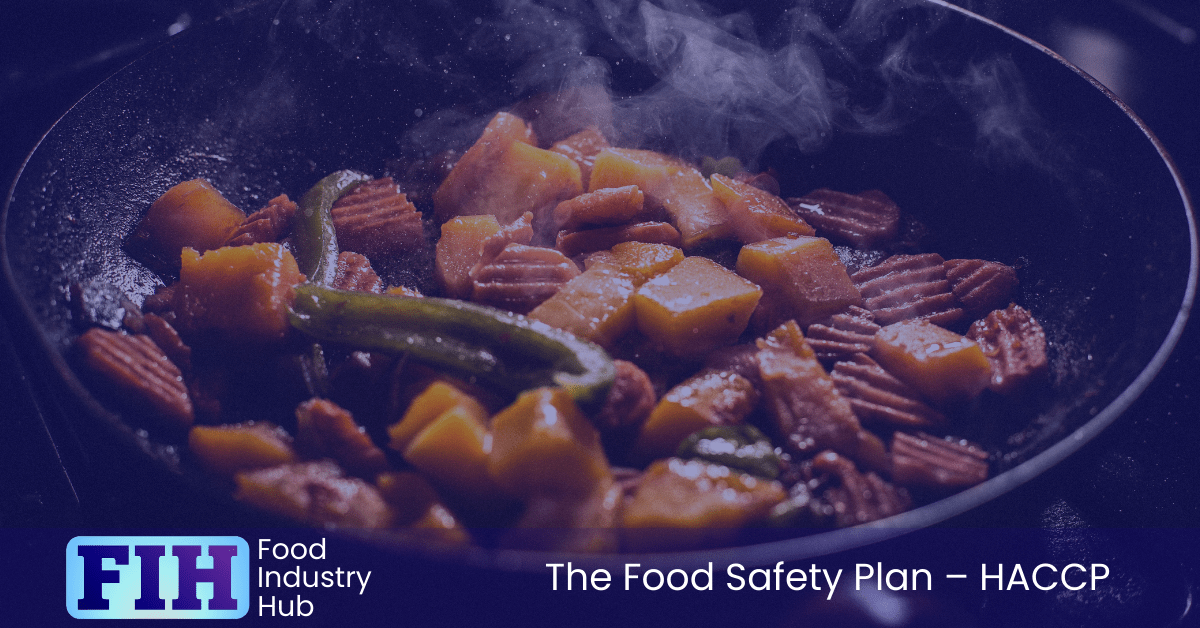
The Intended Use of The Product Must Be Identified
You’ve Fully documented what your product is; now it’s time to clearly define its intended use.
Think about who your target consumers are, including any vulnerable groups such as infants or allergy sufferers, and describe how they’re expected to use your product.
Also, don’t forget to outline any alternative uses for your product.
The Intended Use by The Customer Must Be Described
Often, understanding the intended use of a product by the customer is critical to a successful HACCP plan. It’s not enough to know what you’re producing; you’ve got to be aware of how your customers will use it. This knowledge helps you pinpoint potential safety hazards and put necessary controls in place.
Imagine you’re producing a raw food product. If your customers intend to consume it raw, you’ll need a different safety plan than if they’re going to cook it first. You’ve got to factor in how your product will be handled, stored, and used by the end consumer.
Similarly, you should consider whether the consumer is likely to combine the product with other food products or if the product will be eaten in isolation.
Any Expected Alternative Uses of The Product Must Be Described
In addition to understanding your customers’ primary use of your product, it’s equally important to consider any expected alternative uses. Your product may have been designed with a specific purpose in mind, but that doesn’t mean it can’t serve other functions as well. For instance, a food product may primarily be used for cooking, but it could also be used as a topping or garnish.
As a producer, you’ve got to think outside the box. Consider the various ways your customers could potentially use your product and document them accordingly. This doesn’t mean you have to alter your product’s design or packaging, but rather, you should be aware of these alternative uses to ensure the safety and suitability of your product under these conditions.
Always keep in mind that safety is paramount. If an alternative use of your product could result in safety hazards, it’s essential to provide clear instructions or warnings to your customers.
This requirement can also apply to anticipated consumer behaviour that runs contrary to the primary intended use for the product. For example, it’s reasonable to anticipate that some consumers may eat cookie dough raw, even if the pack indicates that the product should be cooked before it is consumed. In situations such as this, the HACCP plan should identify that risk and trigger label warnings. Alternatively, the HACCP team might determine that are ready to eat product Is necessary – and that it would be inappropriate to place raw cookie dough on the market if it could pose a health risk.
The Consumer Target Group Must Be Defined
Defining your consumer target group is the next crucial step in your food safety plan. It’s not just about who’ll likely buy your product, but also about who’ll actually consume it. This is a significant part of the HACCP system. Identifying your target consumers gives you a clear picture of the safety measures you need to implement.
Consider the eating habits, dietary needs, and lifestyle of your target consumers. Are you targeting health-conscious adults, busy professionals, or perhaps children? Each group has different food safety requirements. For instance, meals for busy professionals should be easy-to-prepare and may require longer shelf life.
On the other hand, children’s meals should be nutrient-dense and free from choking hazards.
Understanding the intended use of your product is vital. Is it a ready-to-eat snack or a raw ingredient for cooking? Each has distinct safety considerations.
The Suitability of The Product for Vulnerable Groups of The Population (E.G. Infants, Elderly, Allergy Sufferers) Must Be Defined
Building on the concept of defining your consumer target group, another important aspect to consider is the suitability of your product for vulnerable groups in the population, such as infants, the elderly, or allergy sufferers.
You must identify the intended use of your product, considering how it serves these specific demographics. It’s not just about offering a product that’s loved by the masses, but also ensuring it’s safe for everyone.
Understanding the nutritional needs and potential allergen sensitivities of these groups is crucial. For instance, if you’re producing baby food, you have to be extra cautious about the ingredients used. Infants’ immune systems aren’t fully developed, so they’re more susceptible to foodborne illnesses.
Similarly, for the elderly, their immune systems are often weakened, making them more prone to food-related diseases. Allergy sufferers, too, have specific needs. Your product labelling must clearly state the allergens present.
Understand your market, but also understand the needs of the vulnerable. That’s the key to a successful and responsible food business.
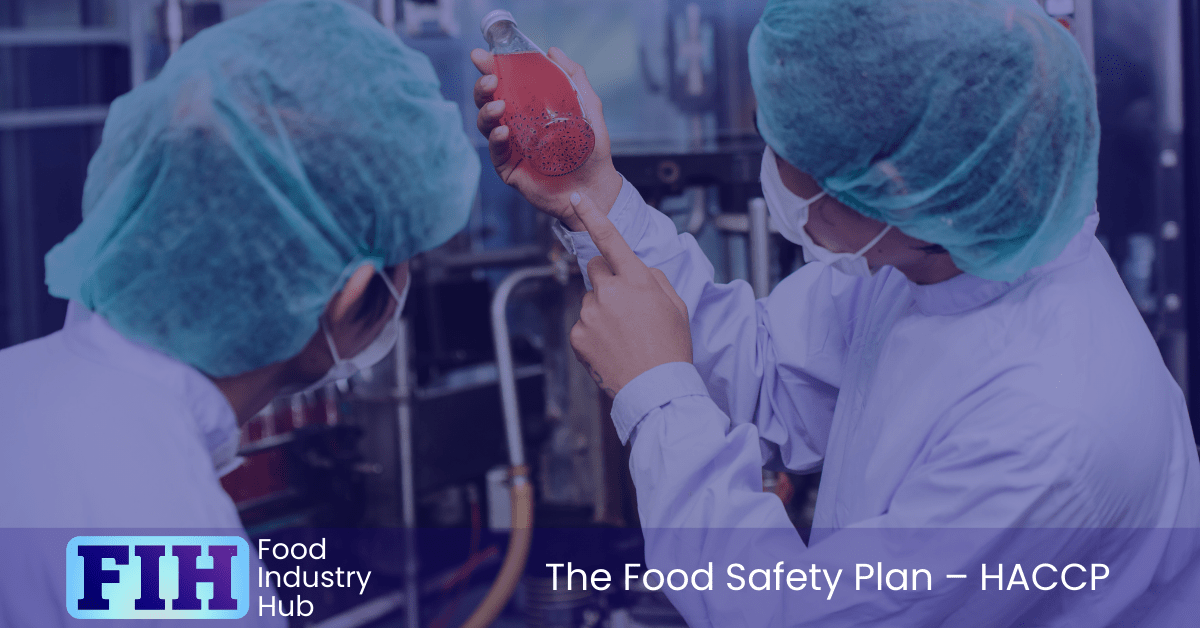
Process Flow Diagram
Now, let’s turn our attention to the process flow diagram. For each product or process in your food safety plan, you’ll need to draw up a detailed diagram covering everything from raw material receipt to processing, storage, and distribution.
We’ll also discuss the key features your diagram should include, ensuring it effectively sets out all aspects of your HACCP plan.
A Process flow Diagram Must Be Prepared to Cover Each Product, Product Category or Process
You have to create a process flow diagram that accurately depicts every detail of the production process for each product or product category.
This isn’t just a sketch, it’s an essential tool to ensure food safety. It provides a visual representation of the journey your product takes from start to finish, offering a clear snapshot of each step along the way. You’re not just documenting processes; you’re creating a roadmap for quality and safety control.
Let’s say you’re producing pasteurised milk. Your diagram will start with the raw milk as it enters your facility, then follow it as it’s tested, processed, pasteurised, packaged, and finally stored. Each of these steps must be accurately represented in your diagram.
Creating this diagram isn’t a one-time task. It’s a living document that must be updated as processes evolve, new products are introduced, or in response to changes in regulations or technology.
The Process flow Diagram Must Set Out All Aspects of The Food Process Operation Within the HACCP Or Food Safety Plan Scope, From Raw Material Receipt Through to Processing, Storage and Distribution
Crafting a process flow diagram that encompasses all aspects of the food process operation is a crucial step within the scope of your HACCP or food safety plan. This diagram serves as an operational guide, allowing you to visually track the journey of the raw materials from receipt through processing, storage, and distribution.
It’s a roadmap of your food process operation, ensuring nothing slips through the cracks.
Your diagram starts with the receipt of raw materials. This is where you’ll consider the quality of the materials, how they’re stored, and the potential hazards that could be present.
Next, the processing stages. Here, you’ll outline the steps involved in transforming raw materials into your product. This could include cooking, freezing, packaging, and more. Each step should be detailed clearly to ensure product safety at all stages.
Finally, your diagram will cover storage and distribution. You’ll need to consider how your product is stored, ensuring it’s kept at safe temperatures and conditions, and how it’s distributed to customers.
Expected Features of The Process Flow Diagram
As you move forward with your HACCP plan, it’s crucial to understand the components of the process flow diagram. This includes the layout of equipment, introduction of raw materials, sequence of process steps, and any outsourced processes.
Additionally, consider the potential for process delay, as it can impact safety and quality.
Plan Of Premises and Equipment Layout
While you’re developing your Food Safety Plan, one essential element to consider is the plan of premises and equipment layout.
The premises and equipment layout plan should clearly indicate the flow of materials, people, equipment, and waste – as well as segregation measures Such as walls and barriers.
This should facilitate Segregation and control of all elements from storage, processing, and transit.
Raw Materials, Including Introduction of Utilities and Other Contact Materials (E.G. Water, Packaging)
It’s time to focus on raw materials, including introduction of utilities and other contact materials (e.g. water, packaging).
Consider the origin, quality, and safety of these components. Your plan should detail how they’re introduced into your process.
Also, ensure they’re free from contaminants and properly stored. Remember, they’re the foundation of your product.
The Process flow diagram should identify every raw material or group of raw materials, Utility component, and food contact material interacting with – or forming part of – the product. It should also indicate the exact stage of the process when each material is introduced as well as any potential for risk.
Keep in mind, Relevant utilities can include things like compressed gases – So the process flow diagram Needs to be comprehensive so as not to miss anything.
Sequence And Interaction of All Process Steps
Your food safety plan needs to address the sequence and interaction of all process steps.
The nature of risk to product safety depends on context – so taking into account preceding and subsequent process steps.
To illustrate, think about a bakery. Raw flour Can be highly microbially active, and it isn’t unusual for a flour specification to permit upwards of 1,000,000cfu/g TVC microbiological load. Prior to cooking, the microbiological load of the raw material is not usually considered a safety risk because the baking process reduces the presence of viable cells to a safe level. Conversely, the microbiological properties of flour would be a significant food safety risk if the raw material contaminated the product after the heat treatment.
– It would be fine to dust a product with flour before baking, but entirely unsafe to dust the same product with raw flour after baking.
In this way, the sequence and interaction of all process steps has a marked influence over food safety risks to the product.
Outsourced Processes and Subcontracted Work
Consider the role of outsourced processes and subcontracted work in your food safety plan. They’re integral to maintaining product safety.
You’ll need to ensure they meet standards in much the same ways as processes carried out internally to your plant. Include these processes in your flow diagram.
Understand their specifics, potential risks, and controls. It’s essential to have a clear picture of how outsourced processes contribute to your product, influencing its safety.
Potential For Process Delay
It’s important to anticipate and prepare for potential process delays.
You must plan for unexpected hiccups in your process flow, such as equipment breakdown or raw material shortage. These can cause significant delays and compromise safety.
For this, think about things like temperature control in the event of a delay on a conveyor belt (Which could affect microbial stability) or overexposure to process is like smoking (which could introduce carcinogen risk).
Rework and Recycling
While planning for potential process delays is important, it’s equally important to understand the role of rework and recycling in your process flow diagram.
With rework and recycling, you should consider any risks associated with using recycled materials and the maximum extent to which reworked materials can safely be incorporated into the process.
Low-Risk/High-Risk/High-Care Area Segregation
In mapping out your process flow diagram, you have to segregate areas into low-risk, high-risk, and high-care categories.
The risk categorisation of each zone should be reflected in the stringency of control exerted by prerequisite programmes.
The food safety plan Should determine risk based on the context of process steps (preceding and subsequent processes) as well as hazards anticipated based on risk zones and segregation.
You’re ensuring food safety, minimising cross-contamination risk, and enhancing product integrity.
Finished Products, Intermediate/Semi-Processed Products, By-Products and Waste
Raw materials, semi processed materials, byproducts and waste streams, and finished products all have different risk profiles. If these materials intersect in inappropriate ways, they can introduce hazards to each other.
Ensure clear routes that prevent cross-contamination. Identify storage areas for each category.
Don’t forget waste management – it’s crucial for hygiene.
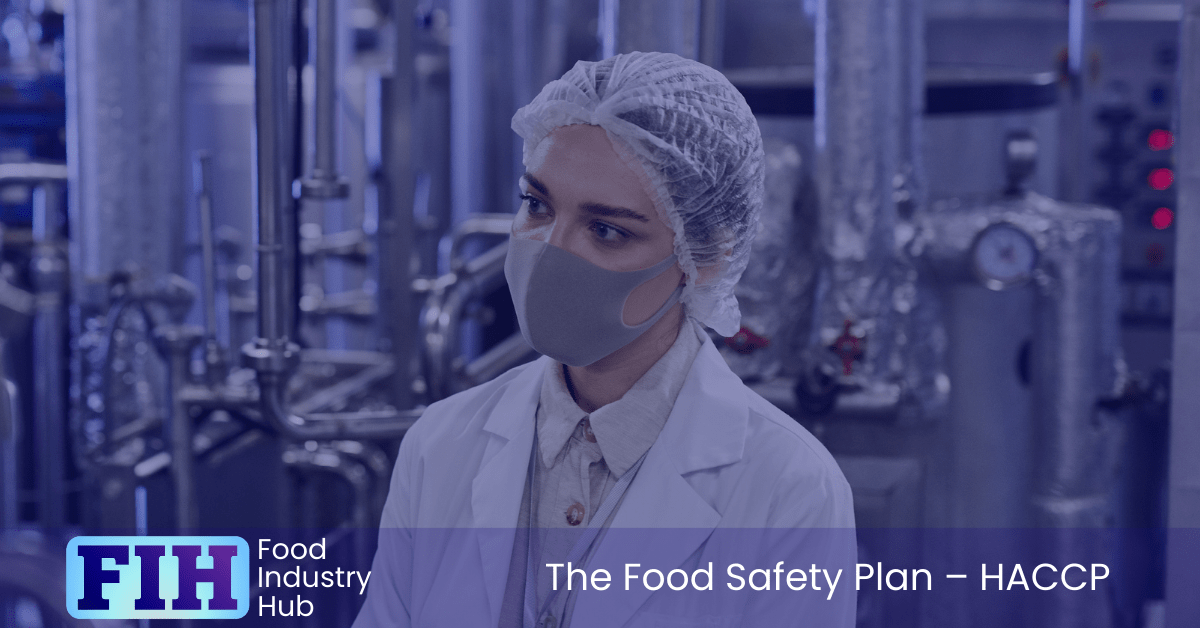
Verification Of the Process Flow Diagram
The HACCP food safety team will need to verify the accuracy of the process flow diagrams through an on-site audit at least once a year, or whenever there are changes to the process.
These changes must be included in your HACCP or food safety plan.
It’s also essential to consider and evaluate daily and seasonal variations, and maintain records of verified flow diagrams.
The HACCP Food Safety Team Must Verify the Accuracy of the flow Diagrams by On-Site Audit At Least Annually, And Whenever There Are Changes to The Process
Ensuring the accuracy of flow diagrams is a critical task for the HACCP food safety team. This isn’t just a one-time job. You’re required to carry out an on-site audit at least once a year.
But that’s not all. You also have to revisit the diagrams whenever there are changes in the process. This is vital to maintain the integrity of your food safety plan.
You might wonder, why is this verification so important? Well, these diagrams are the backbone of your HACCP plan. They illustrate the flow of your food production process, from receiving raw materials to shipping the final product.
Any inaccuracies can lead to serious food safety risks. A yearly audit ensures that these diagrams remain correct and up to date. It’s a chance for you to walk through your process, step-by-step, and compare it with your diagrams.
You’ll look for any discrepancies and fix them. When changes to the process occur, you’ll need to adjust the diagrams to reflect these modifications.
Any Changes to The Process Must Be Considered as a Part of The HACCP Or Food Safety Plan
Every time there’s a change in your process, it’s essential to incorporate it into your HACCP or food safety plan. Whether it’s a minor adjustment or a significant overhaul, it’s critical to reassess your plan to ensure it’s still accurate and effective.
You can’t afford to overlook this step; it’s your shield against food safety hazards.
Now, let’s talk about process verification. It sounds technical, but it’s just a way of making sure your process flow diagram accurately reflects what’s happening in your operations.
When you modify your process, your diagram needs to mirror those changes. It’s not just a matter of crossing Ts and dotting Is. It’s about maintaining a transparent, accurate record of your processes.
Remember, it’s not just about adapting your plan to accommodate changes. It’s about verifying that those adjustments are accurately represented in your process flow diagram.
This step helps safeguard your business from potential food safety hazards and ensures you’re always mitigating risks effectively.
Daily And Seasonal Variations Must Be Considered and Evaluated
Often, you’ll find that your production process isn’t static. It’s affected by daily and seasonal variations that can impact your food safety plan. These variations can result from a range of factors, such as changes in temperature, humidity, raw material availability, and even the skill level of your staff.
Now, why are these variations important? They can directly affect the safety of your food products. For instance, seasonal variations in temperature can affect the growth of bacteria, with warmer temperatures often accelerating growth rates.
Similarly, daily variations in staff skill levels can also impact your food safety. A less experienced staff member mightn’t handle food as safely as a more experienced one. Question things like whether the night shift operators are as skilled as the day shift operators.
That’s why it’s crucial to evaluate these variations in your HACCP plan. Start by identifying the potential variations in your production process.
Once you’ve done that, assess how they could affect your food safety. Then, adjust your HACCP controls accordingly to mitigate these risks.
Records of Verified flow Diagrams Must Be Maintained
Keeping accurate records of verified flow diagrams isn’t just an administrative task – it’s a critical component of your food safety plan. These diagrams plot the journey of your product from raw materials through to finished goods, and they’re vital for understanding and managing risks at each step.
Without comprehensive records, you’re flying blind. You won’t know if your process is running as it should, or if something’s gone awry. It’s like trying to navigate a complicated maze without a map. So, don’t underestimate the importance of maintaining these records.
They not only show you’ve verified your process but also provide evidence to auditors and regulators that you’re managing food safety effectively. It’s about transparency and accountability.
Maintaining these records requires diligence. They need to be accurate, up-to-date, and accessible. Regularly review and update your diagrams to reflect any changes in your process.
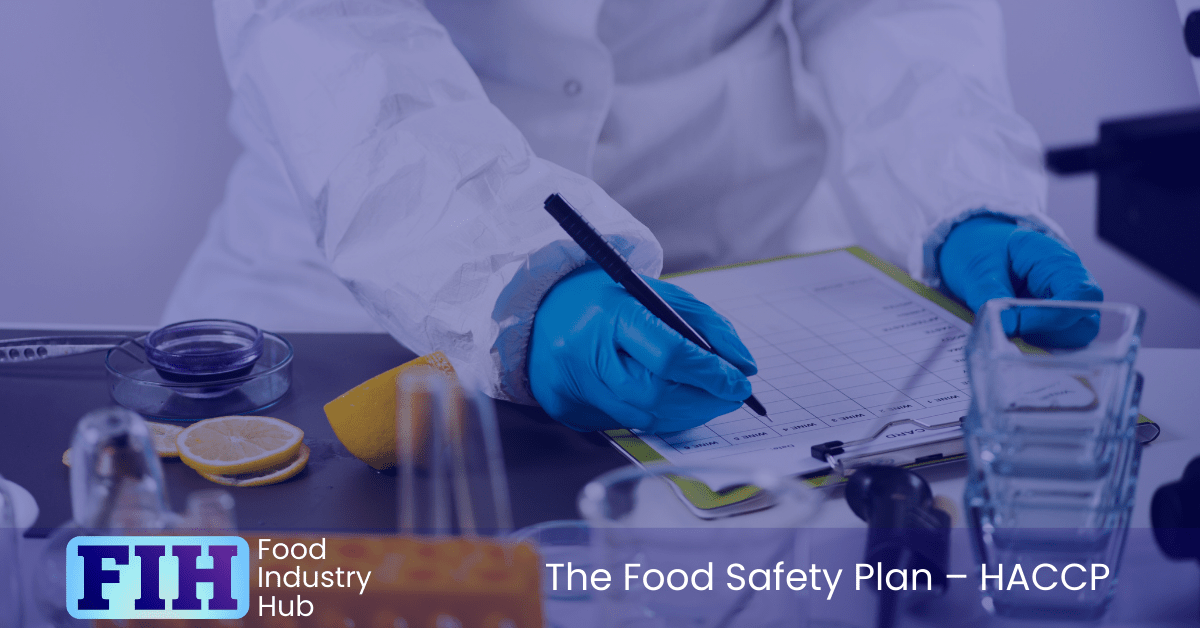
Analysis of All Potential Hazards Associated with Each Process Step
You need to identify and list every process step in your HACCP food safety plan.
Don’t overlook hazards present in raw materials, those introduced or surviving during the process, and various types of hazards inherent to the products you manufacture.
Every Process Step Must Be Identified and Listed
Identifying and listing every process step is an absolute necessity. You can’t just wing it and hope for the best. Each step in the process, from receipt of raw materials to dispatch of products, must be clearly identified, meticulously recorded, and systematically reviewed. This isn’t just a recommendation; it’s a requirement.
Why, you ask? It’s simple. Without this comprehensive list, you can’t effectively analyse potential hazards. You’re basically navigating in the dark. That’s not good enough when you’re dealing with something as crucial as food safety. The stakes are too high.
So, start by mapping out your process. Break down your operation into its component parts. Every single step, no matter how minor it may seem, needs to be on that list.
It’s an involved task, but it’s worth the effort. You’ll have a clear view of your operation, which is the first step in ensuring food safety.
The HACCP Food Safety Team Must Identify and Record All the Potential Hazards That Are Reasonably Expected to Occur at Each Step in Relation to Product, Process and Facilities
Once you’ve got your process steps mapped out, it’s time for your HACCP team to tackle the next task: identifying and recording all potential hazards. This isn’t just a cursory glance at obvious issues. It’s a deep dive into every possible risk that could occur at each step in relation to product, process, and facilities.
Your team should be asking questions like, “What could go wrong here?” and “How could this step potentially lead to contamination or other food safety issues?” These questions help you to foresee potential problems and take preventative measures.
It’s important to remember that you’re not just looking for immediate, obvious hazards. Your team should also be considering long-term risks that could affect food safety and quality over time. This could be anything from cross-contamination to the breakdown of equipment, all of which can pose serious threats if not addressed.
Keep in mind, your hazard identification process should be thorough, detailed, and well-documented. It’s not enough to simply acknowledge that a hazard exists; you must also record it.
This record-keeping is crucial for your HACCP plan, as it provides a clear roadmap for managing and mitigating these risks.
Hazard Analysis Must Include Hazards Present in Raw Materials, Those Introduced During the Process or Surviving the Process Steps, And Consideration of The Following Types of Hazard:
In your hazard analysis, you can’t overlook the potential hazards present in raw materials or those that may emerge during or survive the process steps.
You’ll need to consider several types of hazards, such as microbiological, physical contamination, chemical, allergenic, and radiological contamination, fraud, and even malicious contamination of products.
Microbiological
You’ve got to consider bacteria, viruses, and parasites that may be present in raw materials or introduced during the process.
Don’t forget about microbiological hazards that can survive processing steps, such as spore-forming microorganisms and toxin producers.
Physical Contamination
Physical contamination in food manufacturing poses another significant threat you should never underestimate.
It includes foreign objects like glass, metal, or wood that can accidentally end up in food. These contaminants can cause injuries 2 consumers, so it’s crucial to have measures in place to prevent them.
Strict process control and regular equipment checks are your best defence.
Chemical And Radiological Contamination
Beyond physical threats, your food safety plan should also tackle chemical and radiological contamination.
You need to scrutinise raw materials for any chemical residues or radioactive substances. This might include parameters such as toxins veterinary residues chemical risks from raw material processing, and antibiotics.
Any process-induced hazards, such as cleaning chemicals or engineering lubricants must also be considered and accounted for.
It’s not just about spotting the danger; it’s about preventing it.
Be vigilant, because this isn’t just about compliance, it’s about safety.
Fraud (E.G. Substitution or Deliberate/Intentional Adulteration)
In addition to identifying physical, chemical, and radiological threats, your food safety plan must also address the risk of fraud, such as substitution or deliberate adulteration.
Scrutinise your supply chain to detect fraudulent activities. They could be swapping ingredients or intentionally tampering with your product.
Malicious Contamination of Products
Your food safety plan’s effectiveness hinges on a comprehensive analysis of every potential hazard associated with each step of your process.
This includes malicious contamination of products. The unfortunate reality is that both employees and intruders may be motivated to maliciously contaminate your products.
Look out for risks that could be intentionally introduced to your process.
Don’t overlook any detail, it’s critical to your plan’s success.
Allergen Risks
Addressing allergenic risks requires a meticulous approach to hazard analysis.
You need to identify all potential allergens present in raw materials.
It’s not just about obvious allergens, but also hidden ones. You must ensure that all allergens are clearly identified and controlled to prevent cross-contamination.
Process Context (Preceding and Following Steps in The Process Chain)
You’ve got to consider potential hazards in raw materials, those introduced or surviving the process.
It’s not just about what’s in the mix, but what’s happening before and after.
This includes physical, chemical, allergenic, and biological hazards.
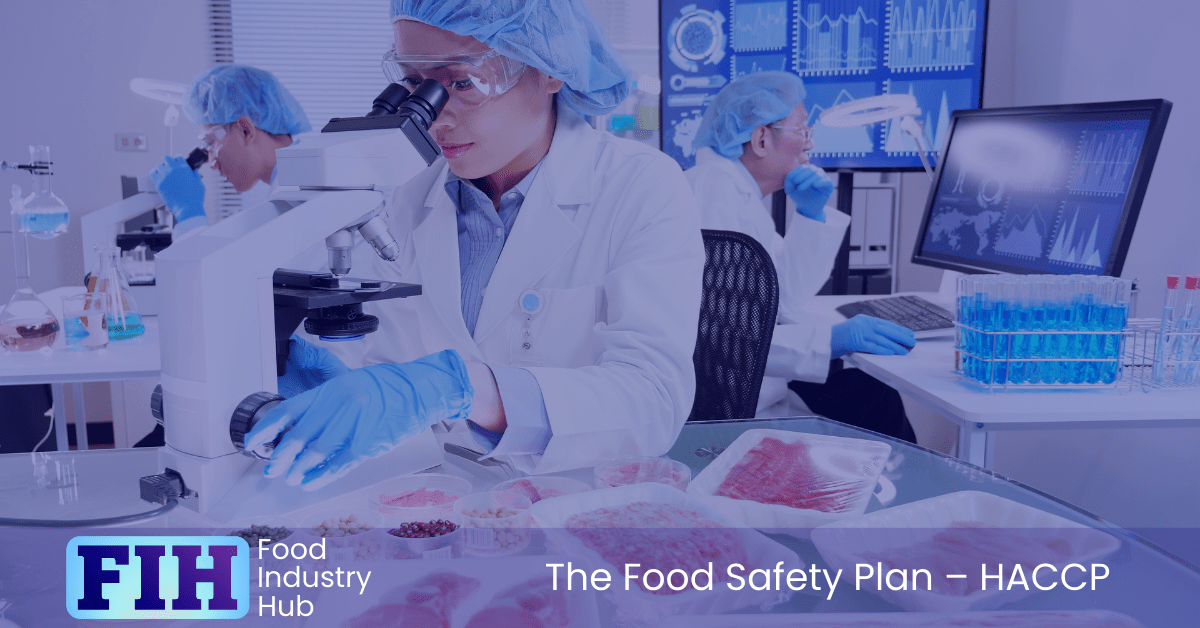
Identification of Significant Hazards
Now, let’s move on to identifying significant hazards in your HACCP food safety plan.
As part of your team, you’ll conduct a thorough hazard analysis to pinpoint any issues that are likely to occur at unacceptable levels.
Your goal is to prevent, eliminate or reduce these hazards to levels that are safe and manageable.
The HACCP Food Safety Team Must Conduct a Hazard Analysis to Identify the Significant Hazards (I.E. Those Hazards That Are Reasonably Likely to Occur at An Unacceptable Level), Which Need to Be Prevented, Eliminated or Reduced to Acceptable Levels
In your role as part of the HACCP food safety team, one of your key responsibilities is to conduct a thorough hazard analysis. This analysis isn’t just a formality, it’s a crucial step in identifying significant hazards.
You’re looking for risks that are reasonably likely to occur at specific points throughout your process hello. It’s about pinpointing the real dangers that could potentially compromise food safety in your operation.
Your job is to identify these significant hazards and devise strategies to prevent, eliminate, or reduce them to acceptable levels.
You’re not just spotting potential problems; you’re actively working to address them. This is a proactive, not reactive, approach. It’s about preventing food safety issues before they happen, not just managing them when they do occur.
Consideration Must Be Given to The Following:
There is a structure to the way hazard analysis must be carried out at every processing step.
You’ll need to consider the likeliness of a hazard occurring, the severity of its effects on consumer safety, and the vulnerability of exposed consumers.
Likeliness Of Occurrence of The Hazard
Think about how likely or unlikely it is for a hazard to manifest in your process.
For each hazard, think about how realistic it is for the risk to be introduced to the food. It might be helpful to consider the anticipated rate of occurrence for each hazard if a processing step is carried out 100 times, of 1000 times, or 10,000 times. Given manufacturing takes place over numerous shifts and potentially continuously throughout a year, this might be a reasonable scale to consider likelihood across.
Remember, it’s not just about identifying hazards but also estimating how likely they are to occur. Each hazard’s probability significantly impacts your risk assessment.
Severity Of the Effects on Consumer Safety
After identifying potential hazards and evaluating their likelihood of occurrence, you must now weigh the severity of their potential effects on consumer safety.
This involves assessing how damaging these hazards could be if consumers were exposed to them. A manufacturing process could not be considered safe if it has the potential to expose consumers to severe hazards.
Properly evaluating the severity of hazards enables the HACCP team to introduce controls or redesign the process for the protection of consumer safety.
Vulnerability Of Consumers Exposed
You must consider factors like age, health status, and diet. For instance, young children, the elderly, and immune-compromised individuals are more susceptible to foodborne illnesses.
Also, people with specific dietary restrictions might be at risk if allergens aren’t properly identified and controlled in food production.
Survival And Multiplication of Micro-Organisms of Specific Concern to The Product
When developing your food safety plan, you must pay close attention to the survival and multiplication of specific micro-organisms that pose a risk to your product.
It’s essential to understand how harmful bacteria behave, particularly in your product’s specific environment.
Knowledge of their growth and survival patterns will help you implement effective controls to keep your product safe.
Presence Or Production of Toxins, Chemicals or Foreign Bodies
While keeping a keen eye on the behaviour of harmful micro-organisms in your product’s environment, you also need to be wary of the presence or production of toxins, chemicals, or foreign bodies.
They’re potential hazards that could compromise your product’s safety. Even trace amounts can be harmful.
Implement regular checks and rigorous testing protocols to ensure these elements aren’t contaminating your process.
Contamination Of Raw Materials, Intermediate/Semi-Processed Product, Or finished Product
Identifying potential contamination sources in your raw materials, semi-processed products, or finished goods is a crucial aspect of your food safety plan.
You’ve got to consider all possible contaminants like bacteria, allergens, chemicals, and foreign bodies.
Don’t overlook any stage of your production process. A single oversight can compromise your entire operation, leading to costly recalls and damage to your brand reputation.
Control of Hazards
You’re tasked with identifying control measures that will either prevent or significantly reduce food safety hazards.
It’s worth considering multiple control measures for each hazard you identify.
If total elimination of a hazard isn’t practical, you’re responsible for determining and documenting acceptable levels of that hazard in the finished product.
The HACCP Food Safety Team Must Consider the Control Measures Necessary to Prevent or Eliminate a Food Safety Hazard or Reduce It to An Acceptable Level
It’s essential to consider control measures that prevent, eliminate or reduce food safety hazards to acceptable levels. This ensures your products are safe for consumers and comply with regulatory standards.
Don’t underestimate the importance of this step – it’s key to your food safety plan.
Consideration May Be Given to Using More Than One Control Measure Per Hazard Identified
When crafting a robust food safety plan, don’t shy away from the possibility of implementing multiple control measures for a single identified hazard.
It’s not overkill – it’s thoroughness. Doubling up on protective steps can fortify your defences, reducing the chance of a hazard slipping through.
Where Elimination of The Hazard Is Not Practical, Justification for Acceptable Levels of The Hazard in the finished Product Must Be Determined and Documented
While it’s ideal to completely eliminate hazards, this isn’t always feasible.
In such cases, you need to determine and document what’s an acceptable level of the hazard in your finished product. This isn’t a free pass; you must justify why it’s impractical to fully remove the hazard.
It’s necessary to ensure the safety standards aren’t compromised while managing these unavoidable risks. In other words, if it isn’t possible to completely eliminate a hazard auto reduced hazard to safe/acceptable levels, then the process itself should not be implemented.
Where The Control of a Specific Food Safety Hazard Is Achieved Through Prerequisite Programmes or Control Measures Other Than Critical Control Points, This Must Be Stated and The Adequacy of The Programme to Control the Specific Hazard Validated
In certain scenarios, you might control a food safety hazard through prerequisite programs or alternative control measures, rather than critical control points.
If so, you must state this clearly. Additionally, you need to validate the adequacy of the program’s ability to control the specific hazard.
In fact, the majority of hazards may be controlled through prerequisite programmes. As prerequisite programmes are intended to create an environment for the safe production of food, a very broad range of hazards can be prevented by the proper implementation of effective prerequisite programmes.
To illustrate, chemical contamination of product is normally avoided by application of effective prerequisite programmes – negating any requirement for a specific CCP that would identify or remove chemical contamination. In cases such as this, the hazard analysis should acknowledge the potential for contamination, and identify the particular prerequisite programmes that would serve to mitigate that risk.
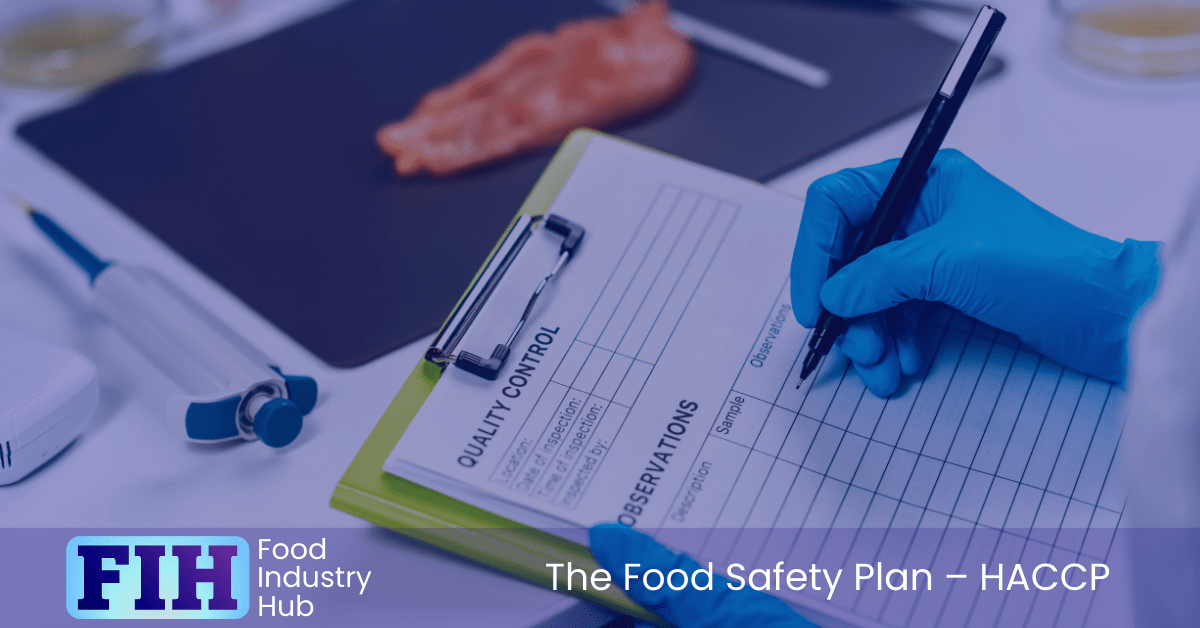
Determination of CCPs
You’ve identified potential hazards in your food safety plan, now it’s time to assess and pinpoint your critical control points (CCPs).
This step requires a structured approach, often aided by a decision tree.
It’s crucial to identify control points that can either prevent, eliminate, or reduce a hazard to an acceptable level, and if control isn’t present where a hazard exists, you’ll need to modify your product or process accordingly.
For Each Hazard That Requires Control, Control Points Must Be Reviewed to Identify Those That Are Critical
Determining Critical Control Points (CCPs) is an integral part of the Hazard Analysis Critical Control Point (HACCP) system, which aims to ensure the safety of the food you produce.
For each hazard that requires control, you’ll need to review your control points. This means examining each step in your process to identify where significant hazards occur, and where control can effectively eliminate or reduce these hazards to acceptable levels.
Here, it’s not about catching every possible issue but focusing on those points that are critical to food safety. You’re looking for points in your process where if control is lost, it will result in an unacceptable risk to food safety.
These critical points can be anywhere from the raw material stage, through processing, all the way to the final product’s distribution and consumption.
Remember, the identification of CCPs is unique to each operation and product. So, don’t assume that what works for one process will work for another. Your control measures should be specific to your operation’s needs.
Determination Of Critical Control Points Requires a Logical Approach and May Be Facilitated by Use of a Decision Tree
Every food production process is a maze of steps and procedures, and navigating through them to determine critical control points (CCPs) might initially seem daunting.
But don’t fret, it’s not as complex as it seems. The key is to approach this task logically and methodically, and a decision tree can be your best tool for this.
A decision tree helps you ask the right questions at each step of the process, leading you to the correct identification of CCPs.
Working for a decision tree to determine CCPs can follow a structure like this:
Can the hazard be controlled to an acceptable level at this process step through the application of prerequisite programmes? If yes, this is not a CCP.
Does this processing step include specific control measures for the identified hazard? If no, this is not a CCP.
Will a subsequent processing step eliminate the identified hazard or reduce it to an acceptable safe level? If yes, this is not a CCP – but the subsequent processing step may be.
Does this processing step specifically and deliberately eliminate the identified hazard or reduce it to an acceptable safe level? If no, then the process should be modified and a control introduced. If yes, then this processing step should be identified as a CCP.
Control Points Which Are Required in Order to Prevent or Eliminate a Food Safety Hazard or Reduce It to An Acceptable Level Must Be Identified as CCPs
So, you’ve used the decision tree to navigate through your food production process, and you’ve identified potential hazards at various steps. Now, you have to single out those control points required to prevent or eliminate these risks, or at least reduce them to an acceptable level. These are your Critical Control Points (CCPs).
Think of CCPs as your safety net; they’re essential for maintaining the integrity of your food safety plan. To successfully identify CCPs, you need to dig deep into your process and pinpoint those steps where an identified hazard can be prevented, eliminated, or reduced to an acceptable level.
You’re not just looking for any control points, but those crucial ones that have a direct impact on food safety. Remember, not all control points are CCPs, but all CCPs are control points. It’s your responsibility to identify these CCPs correctly.
Your food safety plan’s success hinges on these CCPs. So, verify them, monitor them, and manage them well. It’s not just about compliance; it’s about ensuring the food you produce is safe for consumption.
If A Hazard Is Identified at A Step Where Control Is Necessary for Safety but The Control Does Not Exist, The Product or Process Must Be Modified at That Step, Or at An Earlier Step, To Provide a Control Measure
The entire purpose of the hazard analysis and food safety plan is to ensure that food manufacturing processes are safe and reliable.
It would be unacceptable for HACCP team to identify a significant risk that should be controlled, but to fail to introduce a control.
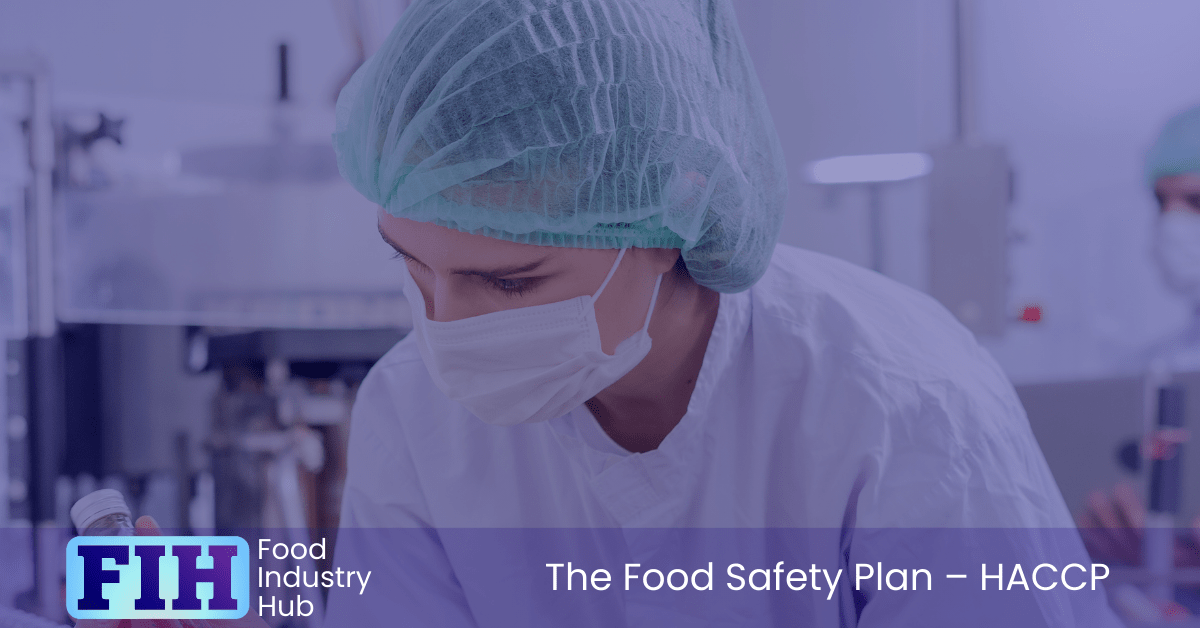
Critical Limits
Now, let’s move on to understanding “Critical limits” in your HACCP plan.
These are the thresholds that determine whether a CCP is under control or not.
You’ll also learn how to validate these limits, ensuring they’re effective at controlling the identified hazard.
About Critical Limits
So, let’s talk about critical limits.
You need to remember, these limits should be measurable whenever possible – think along the lines of time, temperature, or pH.
And when measures are subjective, you should provide clear guidance or examples, like photographs, to back up your critical limits.
Critical Limits Must Be Measurable Wherever Possible (E.G. Time, Temperature, pH)
Every food safety plan must include critical limits that are concrete and measurable.
Think time, temperature, pH levels. It’s not enough to say, “cook until done.” That’s vague.
Instead, say “cook to an internal temperature of 165°F.” for at least 15 seconds That’s specific and measurable.
This way, you can define objectively whether or not a critical limit has been met at a critical control point.
Critical Limits Must Be Supported by Clear Guidance or Examples Where Measures Are Subjective (E.G. Photographs)
Establishing critical limits in a food safety plan requires not only measurable standards, but also clear guidance, particularly when measures may be subjective.
Using examples and guidance including photographs or reference pantones can serve to make a subjective critical limit less discretionary. The idea is to introduce a sense of certainty and reduce ambiguity.
Validation Of Critical Limits
As part of your HACCP food safety team, you’re tasked with validating each Critical Control Point (CCP), including their critical limits.
You’ll need to provide documented evidence that the control measures and critical limits identified can consistently control the hazard to an acceptable level.
It’s not just about setting these limits, but proving their effectiveness too.
The HACCP Food Safety Team Must Validate Each CCP, Including Critical Limits
Before implementing any safety measures in your HACCP plan, it’s imperative that you validate each Critical Control Point (CCP), including the critical limits.
This ensures that these processing steps can effectively control potential hazards.
Your HACCP food safety team must be thorough in this process, confirming that each CCP and its respective limits are scientifically and practically valid for maintaining food safety.
Documented Evidence Must Show That the Control Measures Selected and Critical Limits Identified Are Capable of Consistently Controlling the Hazard to The Specified Acceptable Level
Once your HACCP food safety team has validated each CCP and its critical limits, you’ll need solid proof to back up your choices.
This means documentation showing these measures can consistently control hazards to acceptable levels.
Remember, it’s not just about having a plan. You must demonstrate it’s effective. Your credibility and safety standards rest on this documented evidence.
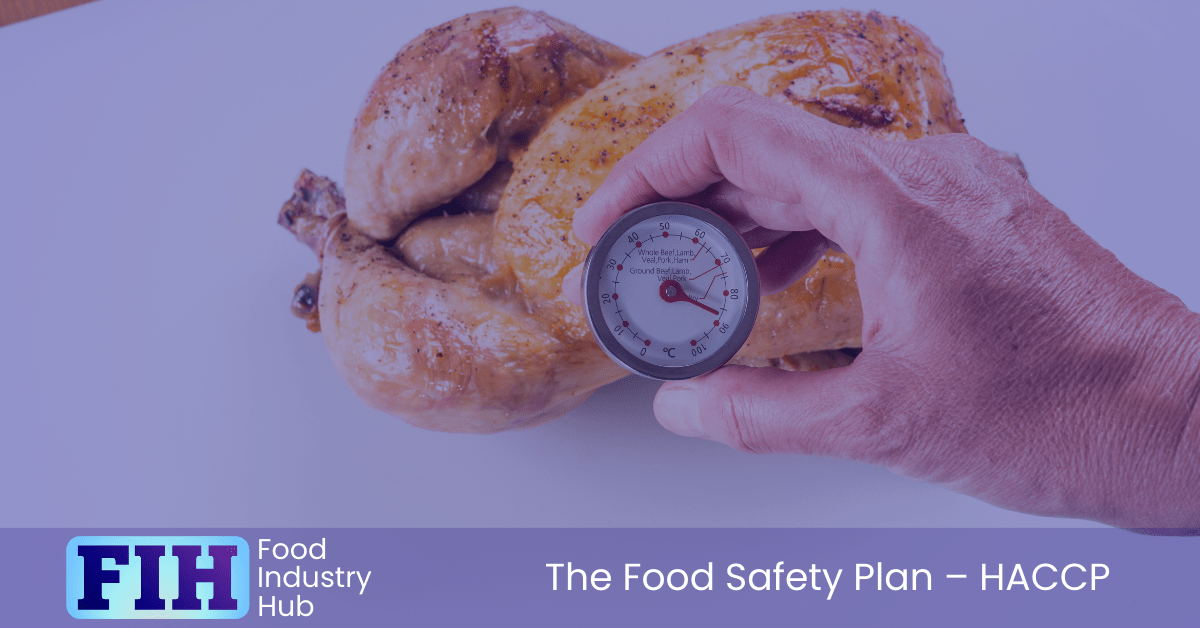
CCP Monitoring Systems
You’ll need to establish a monitoring procedure for each Critical Control Point (CCP) to ensure you’re meeting the critical limits.
Your monitoring system should promptly detect any loss of control at your CCPs and ideally, provide timely information for corrective action.
It’s also essential to maintain accurate records for each CCP monitoring system to guarantee effective food safety management.
A Monitoring Procedure Must Be Established for Each CCP To Ensure Compliance with Critical Limits
Establishing a monitoring procedure for each Critical Control Point (CCP) is a pivotal part of maintaining compliance with critical limits. It’s your responsibility to ensure this process is in place and functioning effectively. Without it, you’re flying blind and risking non-compliance, which can lead to serious food safety issues.
Your monitoring procedure should be designed to provide a record of each CCP’s performance over time. It should effectively track and record all relevant data, such as temperatures, times, or other measurements, depending on the nature of the CCP.
Paper recording or digital systems can be used, but remember, the key is consistency.
The person responsible for monitoring should be adequately trained to understand the importance of the task at hand. They need to know what to monitor, how often to do it, and what action to take if the critical limits aren’t met.
The Monitoring System Must Be Able to Detect Loss of Control of CCPs and, Wherever Possible, Provide Information in Time for Corrective Action to Be Taken
A robust monitoring system is essential for each critical control point (CCP). It’s not just about having a system in place, but about having one that’s effective at identifying when you’ve lost control of your CCPs.
Let’s use a metal detector as an example. The monitoring system would reference critical limits in the form of test pieces (e.g. 3mm ferrous, 3mm non-ferrous, and 3.5mm stainless steel spheres), and would have specified frequency of challenge test (e.g. Start of shift, at product changeover, every hour, and in the event of a disruption to the flow of product). The metal detector operator would be required to alert the shift manager and engineering team in the event that a test piece were not detected and rejected. A failure of the metal detector to detect and reject test pieces would also require that any product manufactured since the last successful challenge be placed on quality hold, to be subject to a second pass through the metal detector When it is verified as working correctly. So, the monitoring system would challenge the CCP’s effectiveness in controlling the hazard, allow for corrective actions to be taken, and predefine what those actions should be.
It’s crucial that your system is robust enough to detect any deviations from the set critical limits of your CCPs. Don’t underestimate the importance of promptness in this process. The quicker you know there’s a problem, the faster you can respond.
Considerations For Monitoring Systems
In implementing your Food Safety Plan, you’ll need to consider your Critical Control Point (CCP) monitoring systems.
You’ll need to think about online, offline, and continuous measurements like thermographs and pH meters.
If you’re using discontinuous measurement, it’s crucial to ensure that your sample accurately represents the entire product batch.
Online Measurement
online systems provide real-time data, allowing you to swiftly identify and rectify any deviations.
It’s a proactive approach, assisting in maintaining food safety standards.
Offline Measurement
Offline measurements, unlike inline systems, are taken periodically.
It’s important to ensure these measurements are accurate and timely, as they’re integral to maintaining food safety standards.
Continuous Measurement (E.G. Thermographs, Ph Meters)
Continuous measurement gives us a different lens through which to view CCP monitoring systems.
Tools like thermographs provide real-time data, enhancing your ability to maintain safety standards.
This constant stream of information helps you react quickly to any potential risks, ensuring you’re always ahead of the game in food safety.
Where Discontinuous Measurement Is Used, The System Must Ensure That the Sample Taken Is Representative of The Batch of Product
Your sampling process plays a crucial role in ensuring the sample you take accurately represents the entire batch of product.
This is vital for verifying product safety. You’ll need robust procedures to guarantee the sample’s representativeness.
By way of example, think about a pasteurising tunnel on a canning line. A measuring device can be placed into the pasteurising tunnel along with the flow of product. For assurance that the readings from the measuring device are representative, the data tracker should be placed into the flow of product and entirely surrounded by cans travelling through the pasteuriser. Each time the data tracker is placed into the pasteuriser, it should be entered into a different point along the width of the pasteuriser tunnel entrance.
Record-Keeping Of CCP Monitoring Systems
Now, let’s talk about record-keeping for your CCP monitoring systems.
You need to include the date, time, and result of measurement in your records for each CCP, and these records need to be signed by the person responsible.
If your records are in electronic form, it’s important to have evidence that they’ve been checked and verified.
Records Associated with The Monitoring of Each CCP Must Include the Date, Time and Result of Measurement
Keeping meticulous records of each CCP’s monitoring process forms the backbone of an effective food safety system.
You must note the date, time, and result of each measurement.
Records Associated with The Monitoring of Each CCP Must Be Signed by The Person Responsible for The Monitoring and Verified, When Appropriate, By A Suitably Competent and Authorised Person
You’re not just collecting data when you’re monitoring each CCP; you’re also ensuring accountability.
Your records must be signed by you, the responsible monitor. And when necessary, they should be verified by an authorised, competent person.
This isn’t just about paperwork; it’s about traceability and credibility. So, don’t overlook this step.
Where Records Are in Electronic Form, There Must Be Evidence That Records Have Been Checked and Verified
In today’s digital age, your CCP monitoring records might be in electronic form.
You must maintain evidence that each electronic record has been thoroughly checked and verified.
This isn’t just a good practice, it’s a requirement.
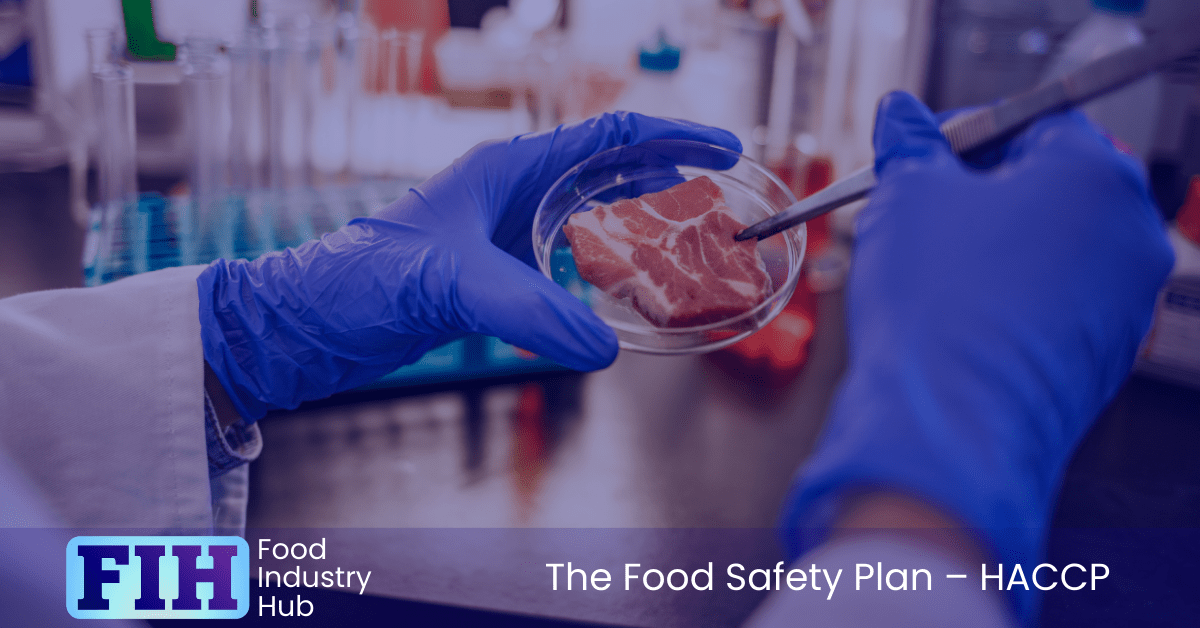
Corrective Actions
Now, let’s discuss corrective actions.
These are actions your food safety team must take and document when monitoring results show a failure to meet a control limit or a trend towards loss of control.
This plan should also address what to do with products manufactured when the process was out of control.
The HACCP Food Safety Team Must Specify and Document the Corrective Action to Be Taken When Monitored Results Indicate a Failure to Meet a Control Limit, Or When Monitored Results Indicate a Trend Towards Loss of Control
When a control limit isn’t met or a trend towards loss of control becomes evident, it’s the HACCP food safety team’s responsibility to specify and document the corrective action to be taken. It’s about being proactive, not reactive.
Understanding the nature of the problem is crucial. You need to evaluate the data, pinpoint the cause of the non-compliance, and then devise a solution.
The HACCP plan should acknowledge the possibility of loss of control, and clearly outline the actions to be taken to control risks and prevent unsafe food from being placed onto the market.
The Corrective Action Plan Must Include the Action to Be Taken by Nominated Personnel with Regard to Any Products That Have Been Manufactured During the Period When the Process Was Out of Control
When a process goes awry, it’s your responsibility to manage any products made during that time. You can’t ignore those items as they may pose risks to consumers.
Your corrective action plan should guide you. It’s not the time to panic or blindly decide what to do. Instead, follow the plan’s step-by-step procedures. Appropriate actions should be defined in advance as part of the documented HACCP plan.
Know the immediate actions to limit the problem’s impact. Identify the affected products, isolate them, and decide on their fate—whether that’s reprocessing or disposal.
Remember, you’re in charge of ensuring food safety, not just in normal operations but especially during deviations. It’s crucial to act quickly and effectively, stopping further production if necessary, and rectifying the situation.
You also need to document these actions for traceability and future reference.
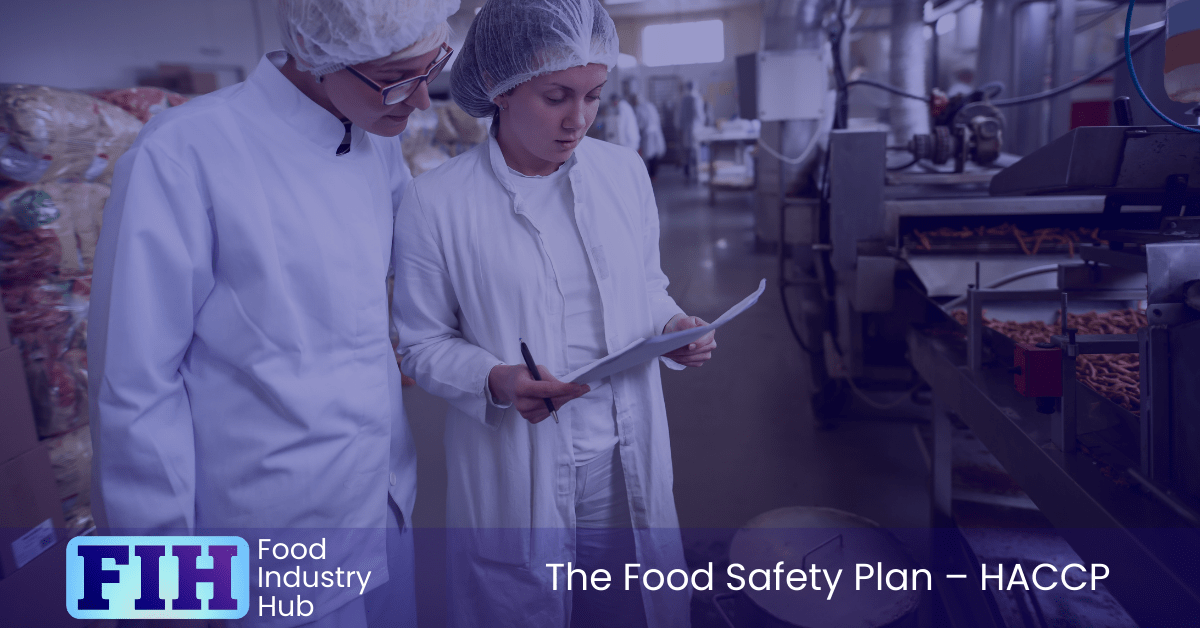
Validation of the HACCP Plan
You need to validate your HACCP plan. This means challenging the effectiveness of the HACCP plan in controlling risks and assuring food safety. Without validation, Food safety controls might be well intended and appear to be appropriate, but Could not be said to offer substantial assurance.
You’ll have to establish verification procedures to confirm that your plan is truly effective in controlling identified hazards.
HACCP Or Food Safety Plans Must Be Validated Prior To Any Changes Which May Affect Product Safety, To Ensure That the Plan Will Effectively Control the Identified Hazards Before Implementation
Validating your HACCP plan is a critical step you can’t afford to overlook.
It’s not merely a formality but an essential process to ensure that your plan will effectively control any identified hazards. You can’t wait until a problem arises; you must validate your plan before making any changes that might affect product safety.
Think of it as a safety net.
You’re not just ticking a box; you’re proactively preventing food safety issues before they happen. It’s about being prepared and staying one step ahead of potential hazards.
This means scrutinising every aspect of your plan, from the ingredients you use to your processing methods, and making sure your process is safe and the food you place on to the market does not pose a risk to consumer safety.
Procedures Of Verification Must Be Established to Confirm That the HACCP Or Food Safety Plan, Including Controls Managed by Prerequisite Programmes, Continues to Be Effective
Establishing verification procedures is your next crucial step in ensuring the continued effectiveness of your HACCP or food safety plan.
You’re not just setting these plans in motion and hoping for the best. No, you’re actively checking that they’re working as intended and catching any problems before they impact product safety.
This isn’t a one-and-done task. It’s imperative you keep tabs on this, making it a regular part of your routine.
You’re verifying that your controls, those managed by prerequisite programs, are still doing their job effectively. You’re ensuring that the measures you’ve put in place aren’t just ticking boxes but are genuinely safeguarding your food production.
It’s not just about confirming they’re working now, but that they’ll continue to do so in the future.
You’re validating your plan, ensuring it’s not only robust but adaptable. Because in this industry, change is inevitable. New hazards can arise, regulations can shift, and your plan needs to withstand these fluctuations.
Examples Of Verification Activities
Let’s now explore some examples of verification activities that help validate your HACCP plan.
Consider activities like internal audits, reviews of records where acceptable limits have been exceeded, and reviews of complaints by enforcement authorities or customers.
Also, taking into account incidents of product withdrawal or recall can provide valuable insights into the effectiveness of your plan.
Internal Audits
Without a doubt, conducting internal audits is a crucial step in validating your HACCP plan.
These audits ensure that all processes are functioning as they should. They’re about checking the system’s effectiveness and identifying gaps for improvement.
It’s not about finding faults, but about safeguarding food safety.
Review Of Records Where Acceptable Limits Have Been Exceeded
A significant part of your HACCP plan validation involves a thorough review of records where acceptable limits have been exceeded.
This process helps you identify any areas where standards aren’t being met. You’ll be able to pinpoint problematic trends, take corrective action, and prevent future breaches.
It’s a vital exercise in maintaining high food safety standards and overall quality control.
Review Of Complaints by Enforcement Authorities or Customers
Taking a closer look at complaints lodged by enforcement authorities or customers can offer invaluable insight into the effectiveness of your HACCP plan.
It’s essential to review these grievances regularly. They’ll help you identify recurring issues, evaluate your plan’s effectiveness, and make necessary adjustments.
Review Of Incidents of Product Withdrawal or Recall
Examining past incidents of product withdrawal or recall is an integral part of validating your HACCP plan.
It’s crucial to analyse why these issues arose, how they were handled, and what preventive measures were put in place afterward.
Results Of Verification Must Be Recorded and Communicated to The HACCP Food Safety Team
Upon completing the verification stage in your HACCP plan, it’s essential to record the results meticulously. This process isn’t just about jotting down numbers; it’s about creating a transparent record that can be examined, analysed, and used to enhance your food safety procedures.
Keeping a detailed record allows you to spot trends, identify potential issues, and make informed decisions about improvements. If there’s a problem, the records will show where it started, making it easier to prevent it from happening again.
Moreover, it’s imperative to communicate those results to your HACCP food safety team. They’re the ones who’ll use this data to validate the effectiveness of the HACCP plan. Sharing this information allows them to fully understand the current state of your food safety procedures, enabling them to make the necessary adjustments and improvements.
Remember, communication isn’t a one-way street. Encourage your team to ask questions, provide feedback, and contribute ideas. Their input can be invaluable in refining and optimising the HACCP plan.
In essence, diligent record-keeping and open communication are key to the successful implementation and validation of your HACCP plan.
The HACCP Food Safety Team Must Review the HACCP Or Food Safety Plan and Prerequisite Programmes At Least Annually And Prior To Any Changes Which May Affect Food Safety
Before the year winds down or any significant changes are implemented, your HACCP food safety team must conduct a thorough review of the HACCP or food safety plan and prerequisite programmes. This isn’t just a recommended practice; it’s a must.
An annual review ensures that your plan remains effective and up to date, considering potential changes in raw materials, processes, and environments.
This review isn’t a task to be taken lightly. It’s about more than just ticking boxes. You’re safeguarding the health of your consumers and upholding your reputation.
You’ll need to meticulously assess every aspect of your plan, ensuring its robustness and adequacy in managing identified hazards.
It’s also essential to review your plan prior to implementing any changes that could affect food safety. Before making these changes, you’ll need to evaluate their potential impact on your HACCP plan.
Remember, it’s not just your plan that needs reviewing, but also the prerequisite programmes. These are the fundamental conditions and practices that are necessary for maintaining a hygienic environment.
Keep your plan pertinent and effective by ensuring a thorough, proactive review process.
Examples Of Changes Which May Affect Food Safety
As you develop your HACCP plan, it’s essential to consider changes that may impact food safety.
This could include changes to raw materials, recipes, processing conditions, or even consumer use.
Let’s explore how these alterations can affect the integrity of your food products and what steps you can take to ensure safety.
Change In Raw Materials or Supplier of Raw Materials
Switching up your raw materials or suppliers can significantly impact the safety of the food you produce.
You’ve got to validate your HACCP plan to ensure safety isn’t compromised. New suppliers might follow different safety protocols, or raw materials could have varying contamination risks.
It’s vital to assess these changes, revise your HACCP plan accordingly and maintain stringent safety checks.
Change In Ingredients/Recipe
When you change a single ingredient or tweak a recipe, it can dramatically shift the safety profile of your food product.
Even a minor alteration could introduce allergens or contaminants, transforming a safe product into a health risk.
That’s why it’s critical to validate your HACCP plan with each change, ensuring you’re proactive in maintaining the highest food safety standards.
Change In Processing Conditions, Cleaning and Disinfection Procedures, Process flow Or Equipment
Just like altering ingredients can impact your food safety, so can modifying your processing conditions, cleaning and disinfection procedures, process flow, or equipment.
Any changes can risk introducing contaminants or pathogens. Therefore, you must validate your HACCP plan, ensuring it’s still effective.
It’s crucial to keep up regular reviews and maintain strict control over your production environment to ensure food safety.
Change In Packaging, Storage or Distribution Conditions
In managing your food business, you should recognise that changes in packaging, storage, or distribution conditions can greatly affect food safety.
It’s crucial to validate potential impacts and modify your HACCP plan accordingly. Incorrect packaging can jeopardise product safety, improper storage can encourage bacterial growth, and distribution changes can affect stability and safety.
Change In Consumer Use
Building on the importance of adjusting your HACCP plan due to changes in packaging, storage, or distribution, another key aspect to consider is the change in consumer use.
It’s essential to adapt your food safety procedures when consumers start using your product differently. Unexpected use can lead to unforeseen hazards, so your HACCP plan must be flexible enough to accommodate these shifts.
Emergence Of a New Risk (E.G. Known Adulteration of An Ingredient or Other Relevant, Published Information, Such as The Recall of a Similar Product
Navigating food safety often means grappling with the emergence of new risks.
When a new threat surfaces, like known adulteration of an ingredient or a similar product recall, it’s crucial to act quickly.
You’ve got to validate your HACCP plan, reassessing and adjusting as needed to ensure continued safety.
It’s a challenging but essential part of maintaining food safety standards.
Review Following a Significant Product Safety Incident (E.G. A Product Recall)
After grappling with the emergence of new risks, your next move is a careful review following a significant product safety incident, such as a product recall.
This step is crucial to validate your HACCP plan. It’s an opportunity to analyse the cause, the response, and potential improvements.
New Developments in Scientific Information Associated with Ingredients, Process, Packaging or Product
While you’re diligently ensuring food safety, it’s crucial to stay updated with the latest scientific developments related to the ingredients, process, packaging, or product.
This knowledge can spark changes to your HACCP plan. For instance, a new study might reveal a previously unknown microbiological risk, or innovations in packaging could enhance product shelf-life.
You must adapt to maintain food safety.
Where Appropriate, The Changes Must Also Be Reflected in The Company’s Product Safety Policy and Food Safety Objectives
Whenever new scientific information emerges that affects your ingredients, process, packaging, or product, it’s not enough to just update your HACCP plan.
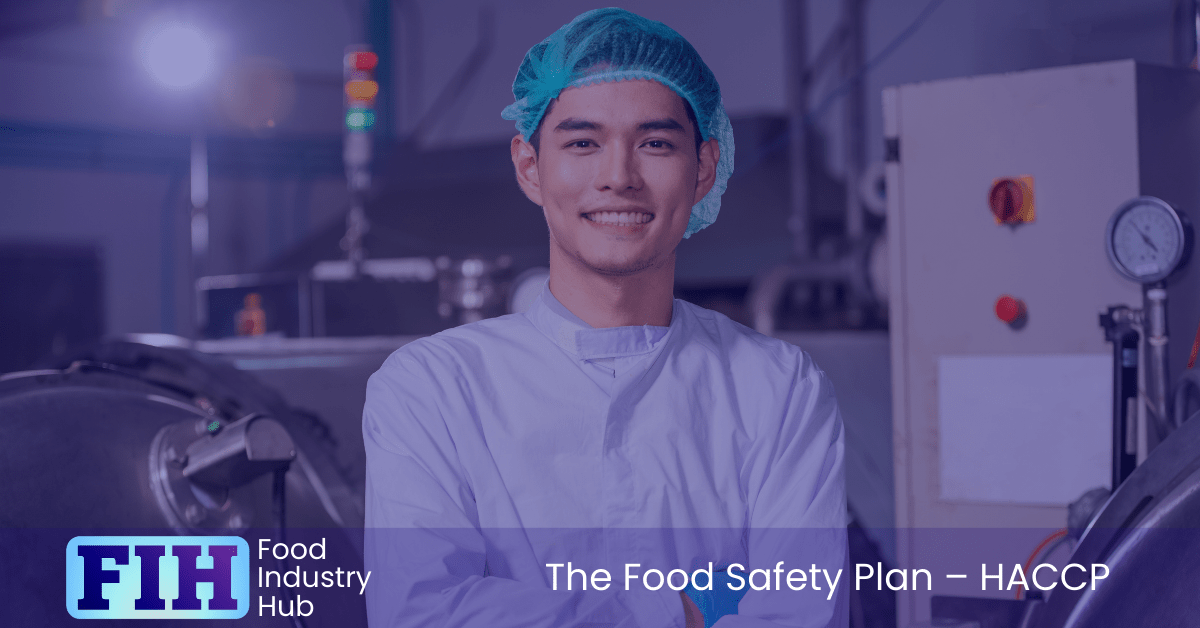
HACCP Documentation and Record-Keeping
Keeping accurate HACCP documentation and records is a critical aspect of any successful food safety plan.
You’ve got to understand, it’s not just about following regulations – it’s about ensuring food safety, quality, and consumer trust.
Your HACCP documentation is your recorded diligence. It tracks the implementation of your plan for identifying hazards, setting critical control points, establishing preventive measures, monitoring procedures, and corrective actions.
Record-keeping is your proof of compliance. It’s your daily diary, showing what you did, when you did it, and who was responsible.
Don’t forget, these records should be kept for at least the shelf life of the product plus one year, or according to regulatory requirements.
But it’s not just about keeping records – it’s about maintaining them properly. They should be accurate, legible, and readily accessible.
You can’t afford to lose them in a mess of paperwork or a computer crash. So, invest in a fail-safe storage system, be it digital or physical.
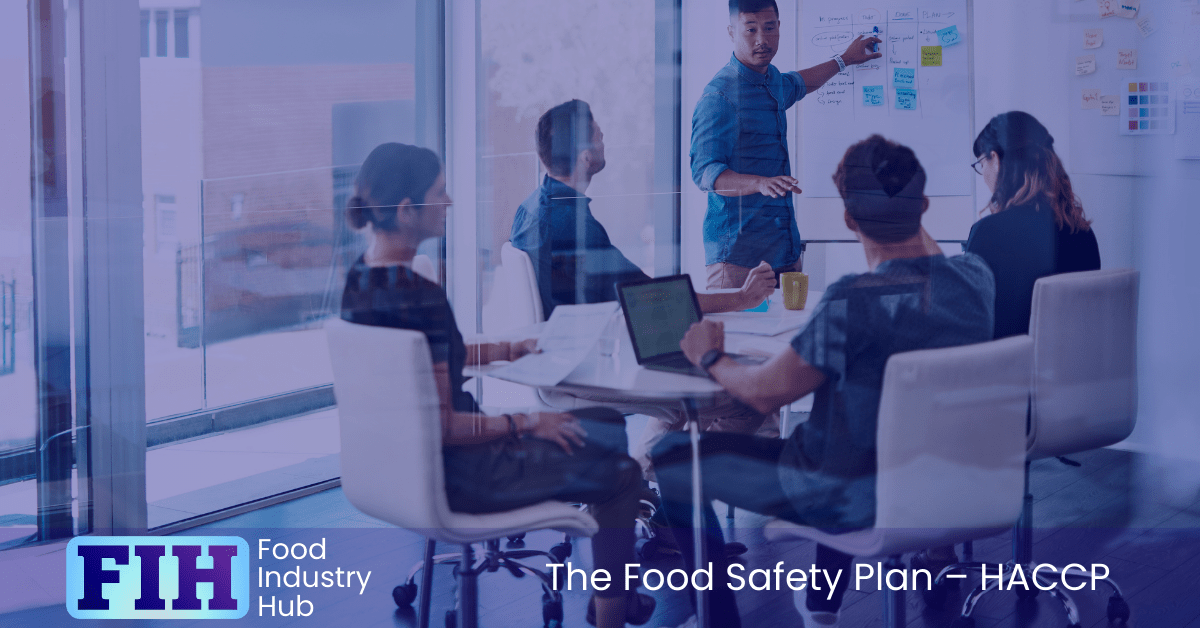
Documentation And Record-Keeping Must Be Sufficient to Enable the Site to Verify That the HACCP And Food Safety Controls, Including Controls Managed by Prerequisite Programmes, Are in Place and Maintained
Moving from the overall idea of HACCP documentation and record-keeping, we now focus on the importance of these records for verification purposes.
You see, having impeccable records isn’t just for show, it’s a vital part of your food safety plan. They’re not just files gathering dust, but tools that enable you to verify that your HACCP and food safety controls are effectively in place and consistently maintained.
Think of it this way. You’re not just ticking boxes; you’re creating a trail of evidence that proves your commitment to food safety.
This means your records must be sufficient. They should detail your controls, including those managed by prerequisite programmes. They need to show that you’re not just setting up safety measures, but also diligently maintaining them.
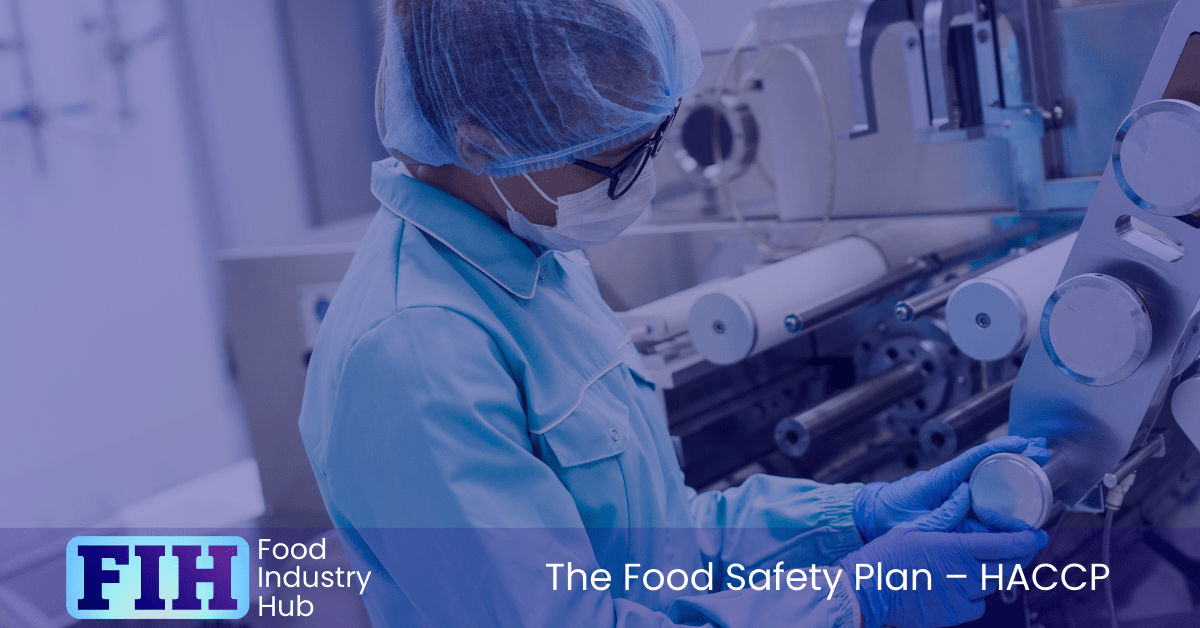
In Summary
In securing your food product’s safety, having a robust HACCP-based Food Safety Plan is crucial. It’s all about identifying and managing risks effectively. You’ll need an alert team, precise product descriptions, and clear intended use of the product. Don’t forget the importance of corrective actions and regular validation. Lastly, keep your documentation and record-keeping thorough to verify that all safety controls are in place and maintained. It’s all part of ensuring a safe food journey from production to plate.
Further Resources
Food Industry Hub serves the food industry with a range of digital resources for the benefit of both commercial food manufacturers and food industry professionals.
For food manufacturers, we offer integrated management systems that give every user a direct interface with your QMS.
For food industry professionals, we provide an extensive signposting service in addition to informational content we hope you’ll find useful as you face new professional challenges. We have very ambitious plans to expand the range of services offered, and currently present informational content on management, safety and quality, food safety and quality culture, and professional success.

